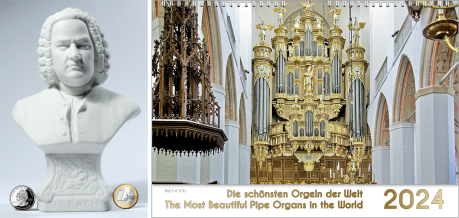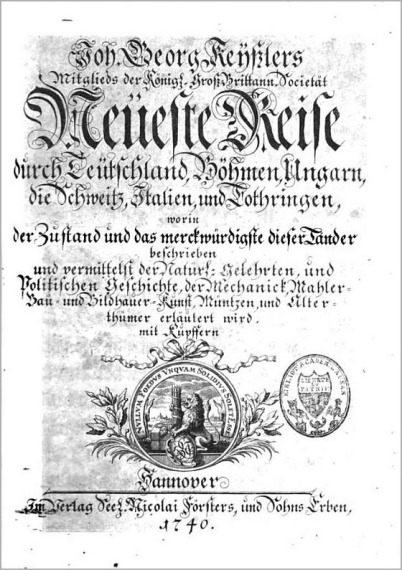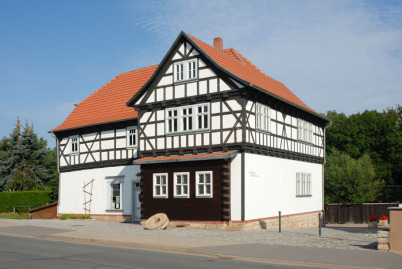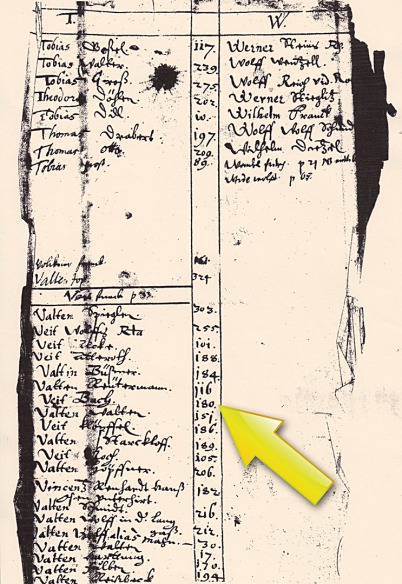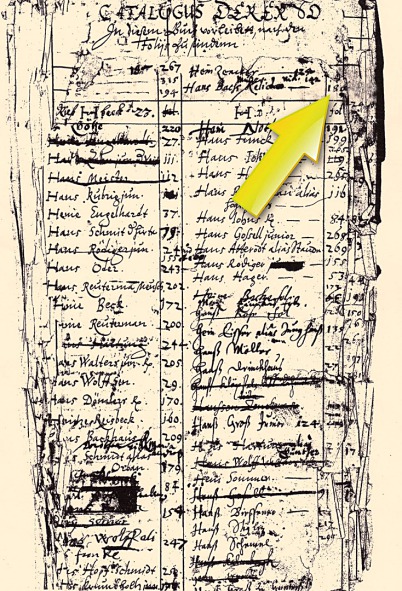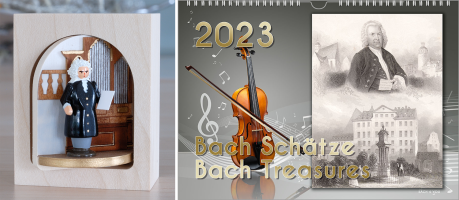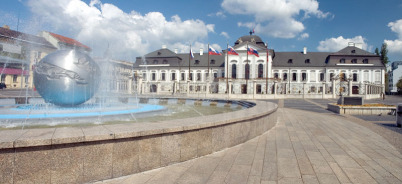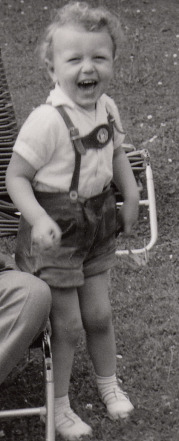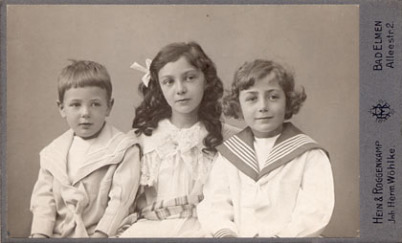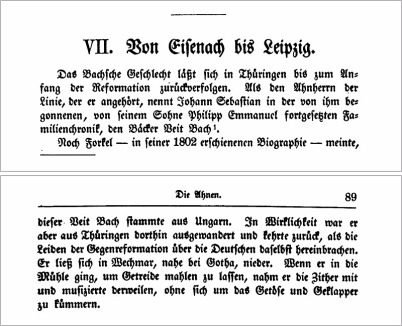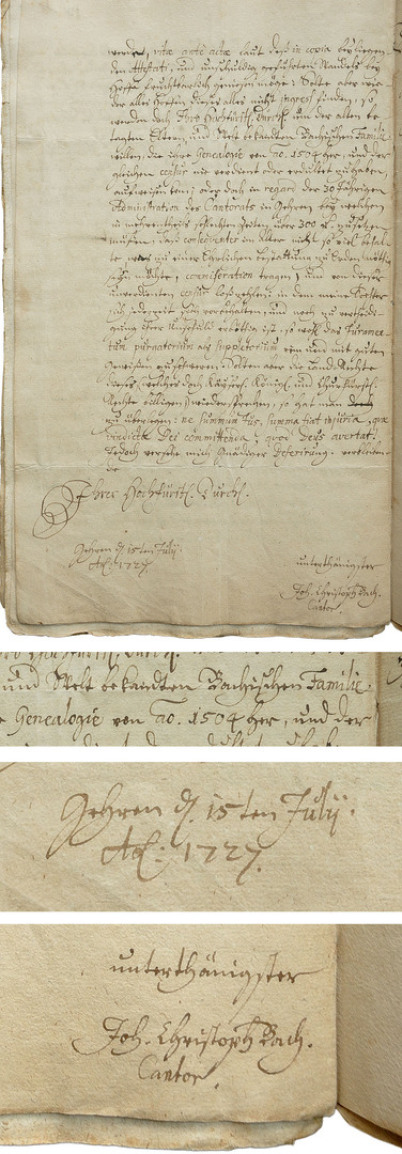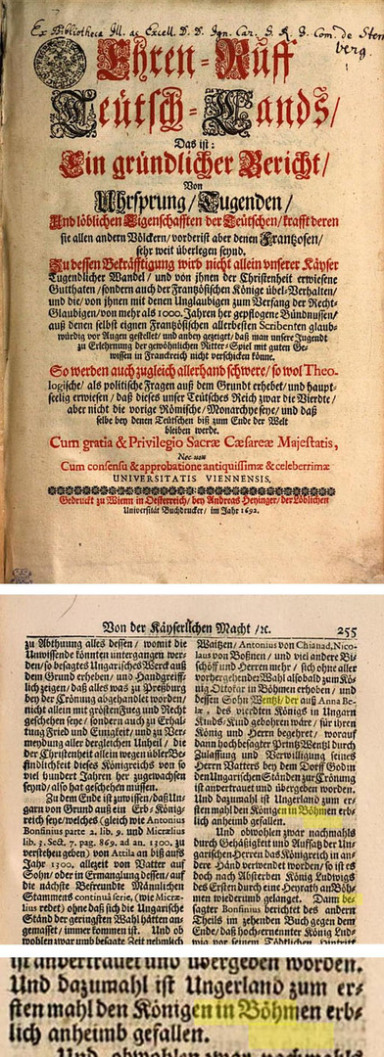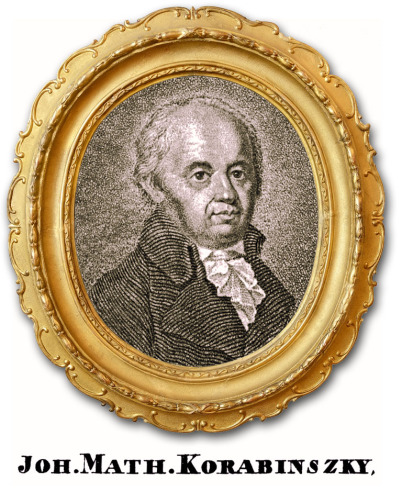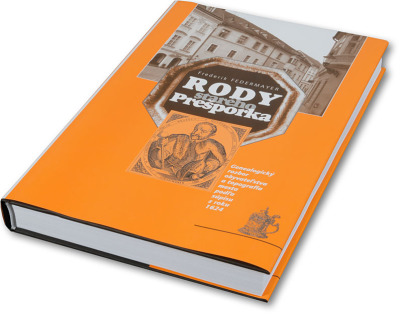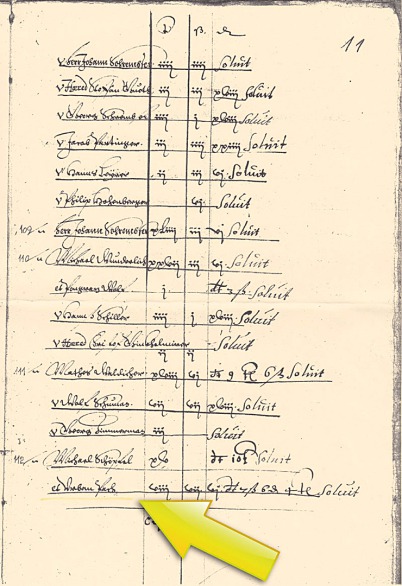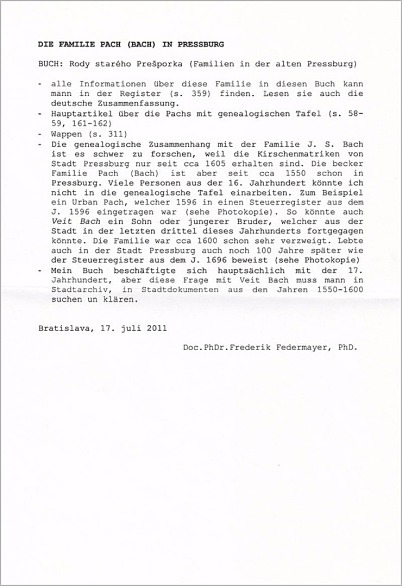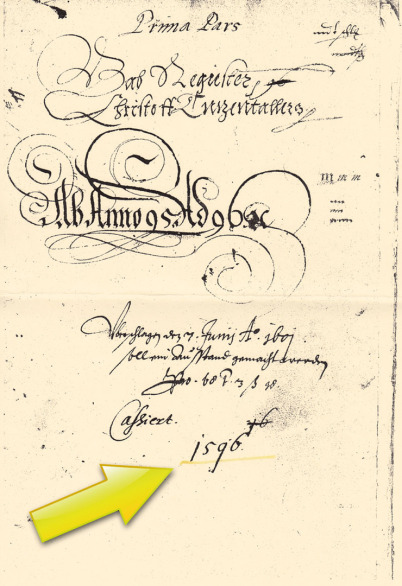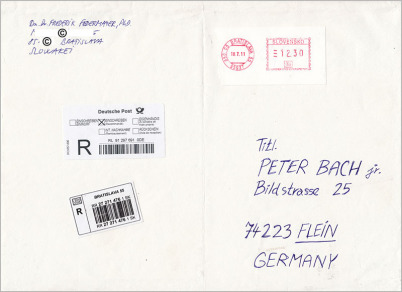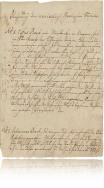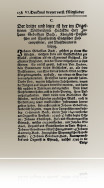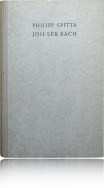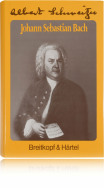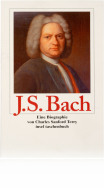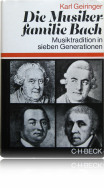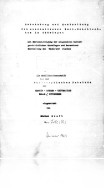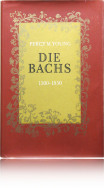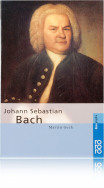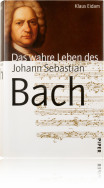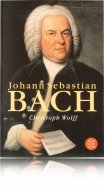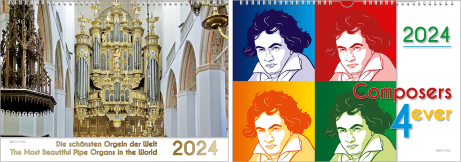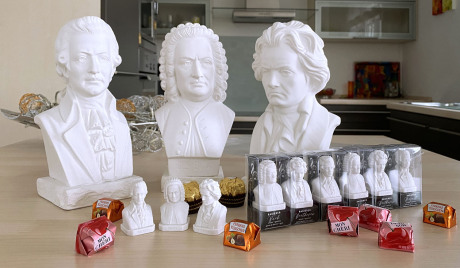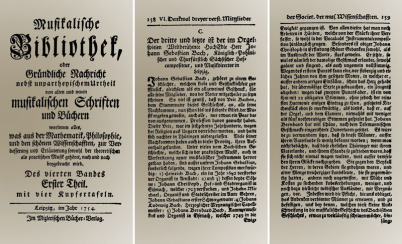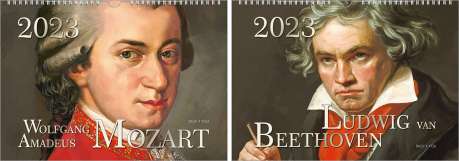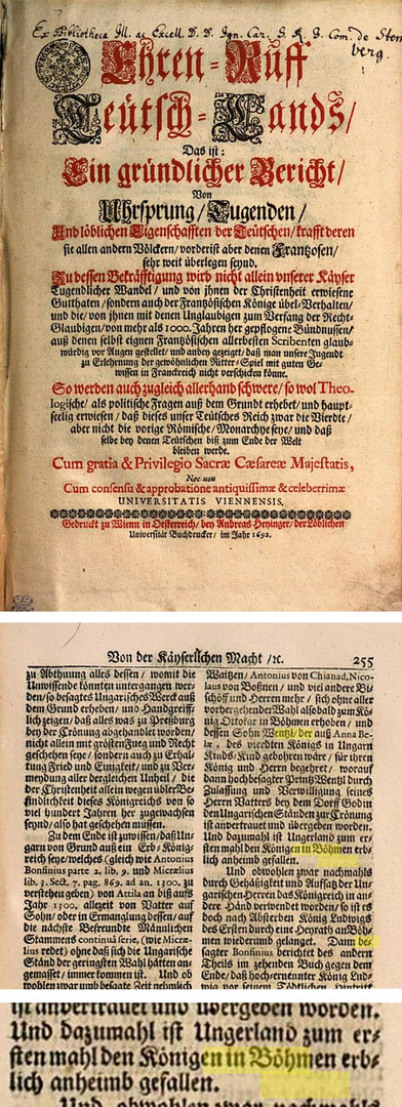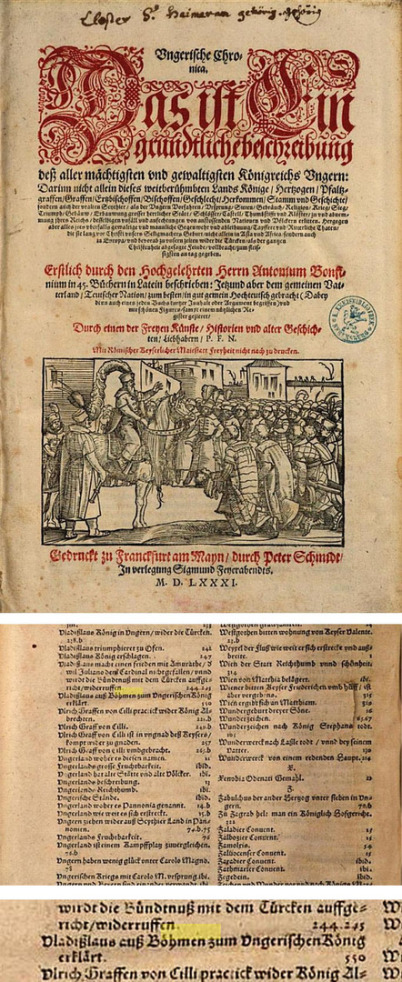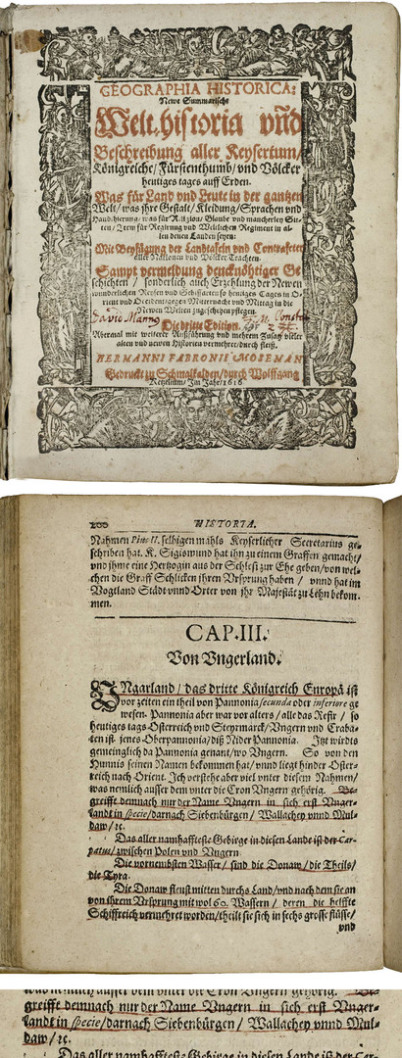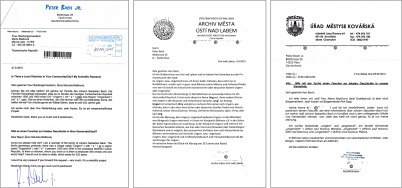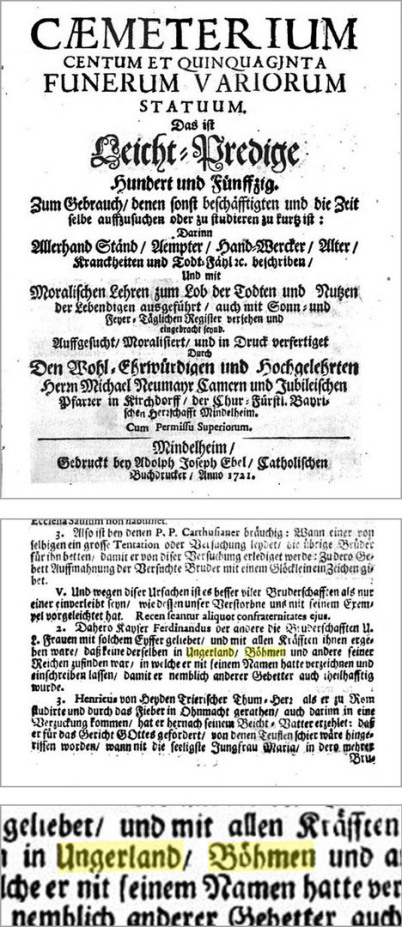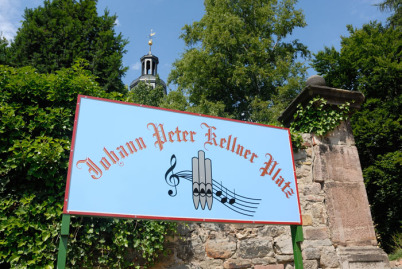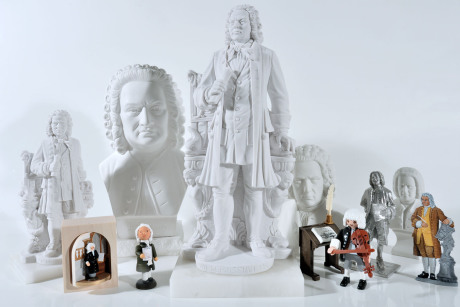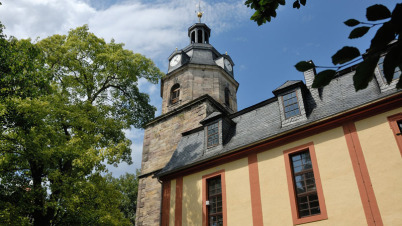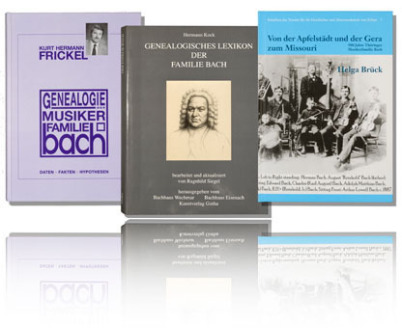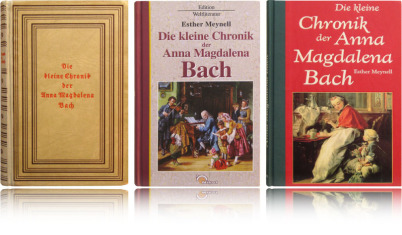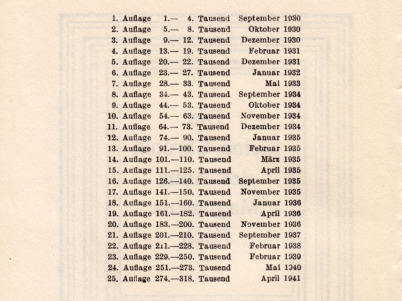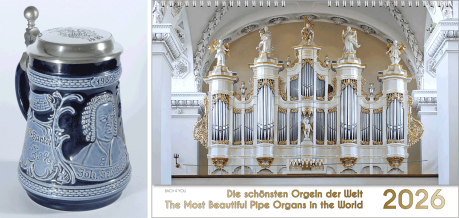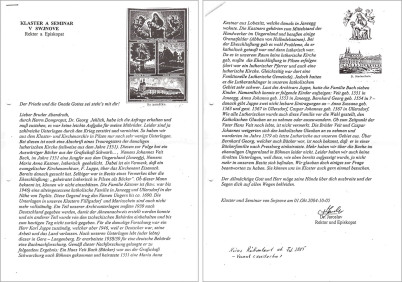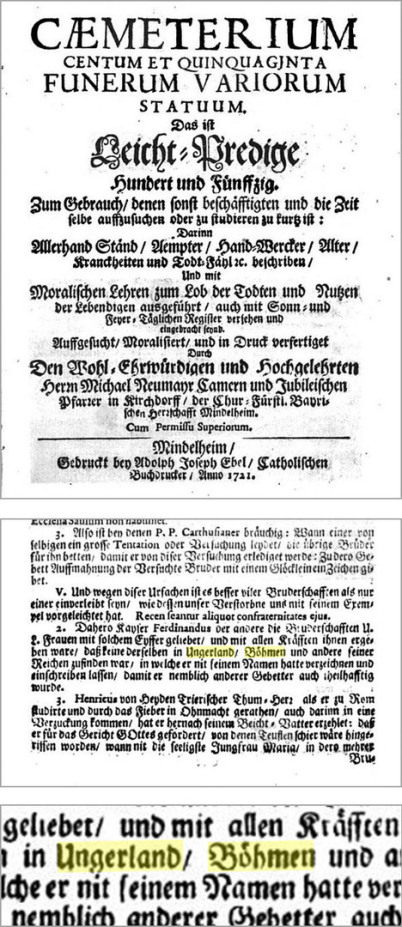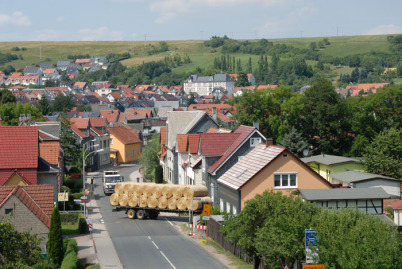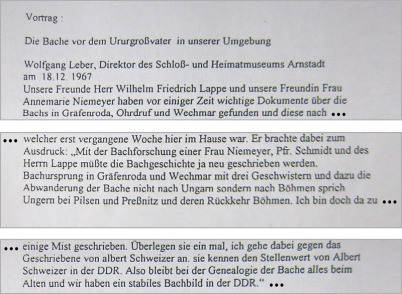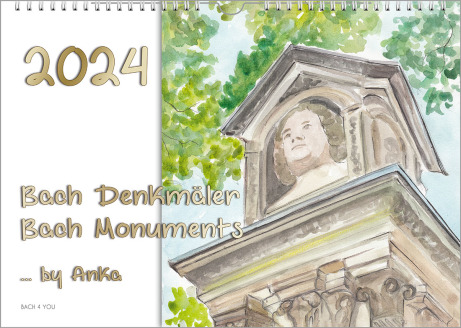Veit Bach from Ungarn, Veit Bach from Ungern? From Ungerland or Ungernland? Or Bohemia? Or Pressburg? What Is It Now?
In fact, there is a very special reason for us to celebrate. As early as the beginning of 2011 our search for Veit and the Bach before Veit Bach started with the genealogy around this family. We met many, many nice people during our adventure. In the "Land of the Bache", in Germany, in the Netherlands, plus in the USA and beyond in many other countries of the world. Unfortunately, some already do no longer live. At this point, we would like to take a closer look, as a representativ for our dear Mrs. Helga Brück from Erfurt (... enjoy the video, paragraph 5 on the page after your click). She would have been proud of our results. With her writing style she would have had her problems – as a teacher. We do not just believe that, we know it!
The Research, the Turning Point and My Very Special Remarkable Website Page
Yes, this site is actually strange. First of all, in the linguistic usage of 1750 (... of course in German only), it is worthy that you remember it. The explanation: "merkwürdig" today is "strange", merkwürdig back then is being worth to remember it ... makes no sense at all in English, I know. But today – at the same time – this page is also strange, in the sense of what we mean today. This page of my website is with its text almost as long and detailed as a whole small book, namely round 19,000 words long. For comparison, the biography about Bach for children that I wrote is some 38,000 words long and that is on 172 pages.This website page – on which you are currently reading – is for your fun. Your fun of reading, your fun to be part my research so to speak. In the middle of my adventure Bach genealogy. However, if you would like to get "straight to the point" and quickly find out what the genealogy around Veit Bach now looks like – updated meanwhile – click here. After that, however, the reading on this page is only a fraction of that much fun. And yet this fraction remains really readable.
It's the only page on my home page in two chapters. And it is written at two different times. The first chapter reflects the state of research before the cutoff date. It is all about what Veit Bach might have meant, when he told of Ungern. Ungern with an "e". (... now it's getting tough, really tough for all English speaking folks, that is to say 7.4 billion minus the few German speaking millions. Ungarn is Hungary, but in Bach's "Ursprung" it's written with en "e", which makes it Ungern. And now it's all about, whether he meant Ungarn, Ungern and whether this is an area or Hungary ... complicated, complicated). We will examine whether Veit could not have meant Bohemia or Moravia, or Transylvania, or Hungary. Where actually is Ungern located? Is it a village or a city? Or a region? And we want to find out what Bach scientists and biographers, hobby scientists and some of the present Bachs " have "made" of this Ungern. The second major theme in the first chapter is Pressburg. The Pressburg, which has now appeared in many, many publications for more than 200 years. We want to examine a guess quite carefully.
In the second chapter it is even about three truly breathtaking oddities. While I am writing this page, that is to say the page you are reading right now, the story of the Bache is changing. And so you can read it "real time" today. Of course, it is that sensational only for some 10 to 20 people on earth, namely for those who are intensively attracted by the genealogy of the Bache around Veit. But for them – it is something terrific. How can such a thing happen? A page in two chapters, written before a deadline, and then further on? And why is there such a strange "introduction" at all?
Advertisement
Music Gifts and Gifts for Musicians
Music gifts, music calendars … learn more.
End of Advertisement
Our search for the origin of Veit Bach, from 2010 to the middle of 2015, lasted five years. Of course, we first found a lot of information which actually already existed. But: we have just found it again – so: we rediscovered this information. If we had known about Yo Tomita and the 54,000 publications about Johann Sebastian Bach and his biggest family of musicians of all time, we would have been able to save hundreds of hours. But that is the way of life every now and then.
In September – and quite exactly in the middle of September 2015 – there is the crucial day. The chapter, better the page regarding Veit Bach, is "on my agenda". The necessary biographies lie ready, the internet is combed thorugh, but the documents which we received are not even roughly overflown. But at least they are there. The crucial fact: we did receive them. Of course, creating the text in my head had already begun, and so this page about Veit Bach from Wechmar is right now coming into beeing. First of all, Ungern is my destination – Ungern with an "e". Line by line becomes text and everything becomes whole paragraphs. Next step: three photocopies which we received: to read them very carefully is my and our job. As it turns out, these are three photocopies with incredible content. We had received them from three dear people, whom we must have obviously impressed with our research. And we figure out together that we have never found the essential hints in our research neither in church books, nor in community records, but that the right people were of crucial importance.
And what is the result? That I do not change the wording of the first sections despite the latest findings. Why not take part in the transformation of my research? You will be amazed, as I was astonished, when, for the first time, I read the contents of the documents absolutely focussed. We know about the explosiveness of the first for two years – but this document is only conclusive with the discovery of the second and the third find. In the documents (... which we only found again, better we found the one, who owns them) it is about three different topics. However, all three are closely interwoven. And so, in this first chapter, please do not take any hasty conclusions. As in a particularly exciting crime thriller in part 1 there is hardly anything as it seems. And yet it is right. Why I do not simply retype the entire page, is what you will also find out later on this page. So have fun with an adventure in Indiana Jones style. Read more below the ad.
Advertisement
99 Music Calendars, Composers Calendars and Bach Calendars
Pipe organ calendars, composers calendars, music calendars and Bach calendars. You can get them all from the publishing house "Bach 4 You". Three sizes. 2024 + 2025. EU style + US style. To the shop.
End of Advertisement
Chapter 1
The Research
1735 until 1963 +
2010 until 2015
Teütschland (... which is Germany in a strange, early word back then): Just google for Teütschland. Why? Because a conscientious researcher can come to the following consideration: whoever writes Teütschland and thinks of Germany, might also write Ungern and means Ungarn. You better get used to the German word, so you'll have more fun. Ungarn is Hungary, however, Ungern might be Hungary ... or something different. And how many search results did I find until the cutoff date? Not a single regarding Teütschland.
We Recycle: Resources and "Remaining Trash" – The Official Beginning of the Bach Genealogy
The actual beginning of the genealogy of the Bache (... remember Bache is plural of Bach back then, today it's Bachs or Baeche = Bäche) is now discovered. 2015. Or if you like that better: re-discovered. And you mean, exactly about that time before Veit Bach, you have read already? The basic parameters are discovered, they all already found? Then you are perfectly correct. There is – at least "somehow" – but not "so really", too ... the beginning of Bach genealogy before Veit Bach.
Veit Bach and Wechmar – this will forever mark the beginning of the family of musicians . Veit was the first Bach to perform music. That was a fact. That is a fact. And it will remain a fact.
However: he was not official, this new beginning of the Bach genealogy – just before Veit Bach – at all. Never. Never ever. You read about it – here and there – but not in current biographies, with one exception. It was also possible to find these basic values in electronic form in the large genealogy portals, here and there. But always: either there were no satisfactory, verifiable references to the sources or the correctness (... for example, simply because the electronic space is not provided in the software). And the statements remaine a matter of trust. Or, the proof is already there, but it is actually "buried": Buried in tons of assumptions about the many Caspars, the Veits, the Hansens (... German plural of Hans) and the Hans Veits. Decorated with ssemed to be thousands of annual figures and assumptions about this and that degree of relationsship.
And that is why we have now vigorously recycled, better: first recovered and then vigorously "cleaned out". For you, dear Bach fan and, sure, for us as well. And we finally added what you have certainly never read. In fact, the truth aound the time of Veit Bach actually drowns. A maximum of five names of Bach's children are known to the average fan of the master. Who cares whether the uncle of Veit could have been his brother, nephew, or father, if the essentials are hidden with that?
First, I leave out all the names and data and assumptions that have nothing to do with the actual great-grandfather (3 greats) of Johann Sebastian Bach ... and then what remains? The extract from one name and the important argument – exclusively – precisely for this purpose. Once there is now the result as a conclusion (... you can go back to the fast lane, but you just do that, if you read the last page of a book, too). Further down that page you can read about all the many exciting facts "en detail" – for your pure entertainment – not at all hoppla-hopp which is easy going slapdash in German. So there is then – quite officially now – what you may have been looking for as long as we did. Or even longer: here you can find – and everyone interested in it – now the official sequence in the genealogy of the Bach family of musicians. From the first known member of the family to the first musician Veit Bach to the composer from Eisenach. The genealogy after Johann Sebastian Bach is well known to the general public. And now please "drum roll" and "Tadaaa ..."
.
.
.
I
Hans Veit Bach
(... born somewhere in Thuringia. Died abroad, southeast of Thuringia, date of birth and place of birth unknown).
I
Veit Bach
( ... born 1551 in Janeegg/Bohemia; died
1619 in Wechmar, Thuringia)
I
Christoph Bach
(Born 1613 in Wechmar, died 1661 in Arnstadt, grandfather of Johann Sebastian Bach)
I
Hans Bach
( ... = Johannes Bach = Hans der Spielmann (... Hans the Gleeman) = Great-grandfather of Johann Sebastian Bach; born 1576 in Ungarn*, died in 1626 in Wechmar, Thuringia)
I
Johann Ambrosius Bach
(Born 1645 in Erfurt, died 1695 in Eisenach, father of Johann Sebastian Bach)
I
Johann Sebastian Bach
(Born 1685 in Eisenach, died in Leipzig in 1750)
* = Found by our genealogist Christian Hoske. We now examine whether Hungary (... Ungarn in German) was written in the document, or whether Hans was born in Bohemia, and that was added to Hungary in the opinion of the individual who wrote it. Or whether there is again this so mystery-haggard Ungern.
Is Julius Cesar Born in Juneau, Alaska? What About Veit Bach? Is He from Hungary?
Age old – or ... with more reverence ... very historical: the so-called entrance book from Wechmar: from here everything is clear with the Bachs. Veit and Hans belong together, you can see the "order number 180". It is great alphabetical ... we would actually have liked a year better.
Advertisement
Music Gifts and More Music Gifts
Great music gifts, great music calendars … learn more.
End of Advertisement
Veit Bach, Veit Bach – What a Terrible Dilemma!
Veit Bach. Ungern. Ungarn. Pressburg. Bratislava. Thuringia. Bohemia. Hungary, Ungernland, Ungerland. Next: This page of my website and this topic around Veit Bach is my hobby in the hobby: where does Veit Bach come from? So where did the Bache come from at all? Was Veit Bach really the forefather of the musician family? This page is still fresh in September 2015. And on her there are some spelling mistakes here and there. This is how it always happens: with a new website page and at the same time with a new topic. But, to this point, not many of my esteemed visitors find their way. And those who have found their way to this ection are welcome to look over these mistakes. Anyway, from the second chapter, it is only interesting and important for nitpickers like me. And that ... is what you can read quite well even with a few mistakes. And as well, if everything is not yet 100% really complete. Also the individual references to paragraphs in the mentioned books and documents, which represent and prove everything: you will only find them gradually added on this page. And, of course, my assessments are also changing – constantly – because I "do not" get stuck in my own insides. If the facts change, then the content on this special page also changes. Just on this page all alone for Veit Bach only. I just ask myself, for which Veit Bach? So? Please expect sensational discoveries. Very seriously now.
Veit Bach from Pressburg in Hungary? What a nonsense. As we shall see. Please read on.
A small, cordial request: if exactly this page of my website helped with your research – or if you are at all interested in the fact that this is exactly the right genealogy of the Bache, that is to say the Bach family of musicians – then you could actually help me – if, yes if you have your own private website: by linking to this site from your webiste. Then my webiste and this page about Veit Bach is "climbing" on Google. And you just find it even better and much faster. Thank you very much.
By the way, you are cordially invited to retype the history of the Bache from Thuringia – around Veit Bach – and to publish it together with me in the future a next time. That is, if you do not just disagree with me, but you are able to prove that. So if you make a trip to Ullersdorf, for example - with a rental car or fly and then lease a rental. And you find hints in a historic church archive. And you take photos. And we talk about you finds. I do not care what the truth is. Here, at any rate, it simply belongs. The truth around Veit Bach, to the children of Veit Bach, the grandchildren of Veit Bach, his parents and also his grandparents.
How wrong you can be! When we began our search for a connection to Johann Sebastian, we were sure: it would only work through the father of Veit Bach. We found him meanwhile. But a very different way finally led to the goal. In the picture you can see the author of this cheeky view on genealogy before Veit Bach: Peter Bach Jr., even before his youth really began.
Veit Bach – Welcome, International Hobby Genealogists. Plus All Nitpickers, Too
First of all a congratulation to all who wanted to find out more about Veit. About "our" Veit Bach. About Veit Bach, the earliest of all Bach musicians in Thuringia. You, dear visitor, have now arrived at your finishing line of your research and you no longer need to search for more pages on the Internet. Also you don't have to dig through more archive, ask for no further opinion, no start of a next research and above all: not to study Wikipedia. Because you yourself can and should now form your own opinion – your very own opinion – if you do not want to share my conclusions from all documents, books and reflections with me.
Why is it like that? This question is more difficult to answer than to satisfy your thirst for knowledge about Veit Bach. If you want to know why you have actually reached the finishing line of your research about Veit Bach, then you have to go on reading "unfortunately". Section by section, argument by argument, and you can also personally check on every document, original by original, too. And that: to perfection.
Not Veit Bach, not Hans Bach, not Caspar Bach – but an exciting moment in the search for ancestors: with pictures every fun doubles: 3 Bachs!
Generally some time in the last century the Bach science has agreed without talking to each other that Veit Bach was the progenitor of the Bach family of musicians. And that Veit Bach is precisely the Veit Bch, which is listed in the church books of Wechmar – who died in 1619. And on the fact that this Veit Bach is family not only by evidence, but by documentary proof. Okay then. Or isn't it okay?
This page on my Bach website explicitly deals with the ancestors of Johann Sebastian Bach, who formerly lived as exactly the Veit Bach listed in the last section. It is important to note the following upfront: first of all, join in with the fact that there is really a cussed confusion with Veit and Hans. Such a man with the name of Veit, died in 1619, and the progenitor of the Bachs in Thuringia: that sounds perfect, explicit and crystal clear. But if you examines the time around 1619 asbolut exactly – regarding the Bach genealogy – you will find incredibly many and confusing indications reagarding the names Veit, Hans, Hans Veit and Caspar. Too many? Yes, way too many! And with them it becomes - again again all around Bach – wonderfully chaotic and also very unclear.
This page wants to achieve one goal: free of economic and personal considerations, no requirement of a state (... for example the GDR, it's the DDR in German)and we get to that later) excluding the opinion of individual persons (... except they would be really conclusive, but plentyfold contradicted on this page) and with a really healthy mixture of "clear head", healthy common sense and found documents determine where the Bachs really came from. We also want to include quite young documents: documents that were found as late as in the last 50 years – that is, long after 1950 – and which therefore could not be taken into account precisely by that of the great biographers who was closest as a genealogical researcher: Charles Sanford Terry from Great Britain, the best of the famous biographers in the discipline Bach genealogy.
But we also want to examine the convictions of all the great biographers on the topic: what they wrote – actually always on the first few pages in their books – testifies to what they were convinced of. Christoph Wolff – for example - has currently a complete hands-off aproachregarding this early Bach period: his time journey begins with Ambrosius, far from the problematic epicenter and "minefield" of the Bache in Thuringia. Similarly, Helga Brueck, in her book "Von der Apfelstädt and Gera to the Missouri," (From the Apfelstädt and the Gera (both small rivers) to the Missouri (big river) which mentions Veit Bach just once, does not address the topic, that is, the origin of the brook. Two key points are crucial with my service for you: First of all, apart from my opinion on Mr. Korabinsky's "performance", you will not be able to read who of the people of our time are simply wrong or even spread nonsense: simply because of fairness because 99% of the achievements of these authors are highly valuable. Only two conclusions are the exception: they are actually jabberwocky and once just simply refuted.
Secondly, without buying 243 books for that, you can make your own picture. Whether my personal conclusions are also nonsensical, or just wrong or even are just wishful thinking. Because there are all the facts around Veit Bach for you today including all the sources on this page. And to "read it yourself". Not just as footnotes and not with my expectation of your blind trust. By the way: of course you would not have to buy 243 books –a round ten to fifteen would already be enough.
Albert Schweitzer's biography as an original: Forkel and Dr. Albert, however, are both wrong – as we shall see. In some cases, Dr. Schweitzer, however, was right: Veit Bach did not come from Ungarn (Hungary). But the detai with the quick back and forth over the German-Czech border is – unfortunately – just wrong! And how does he get it?
For Genealogists in the Matter J.S. Bach and for Researchers Subject Veit Bach
Not even in my briefing it is really easy. But ... let's get to the point. The Bachs are from Thuringia. There were already have been a lot of them around in the 14th and 15th centuries. But they did not make any music at all in the first generations, as far as we know. 1504 is the first date that can be associated with this family of musicians, actually by documents. In Thuringia. And only by a very, very small number – namely one single great, successful biographer – is this fact "transported" at all, in order to give you an opinion of your own. None of the great biographies (... with one exception) mentions it, the so-called "church penitential", which arose after all eight years before the list collected by Johann Sebastian Bach in 1735 – Bach himself called it the "origin of the musical Bachisch Family", which is the Ursprung, or the Ursprung of the musical Bachish Family – and in it he presented Veit Bach as the prime father of the dynasty. The day on which this letter was written - the so-called "church penance" ... is the 15th of July, 1727 and the author, and a Bach – himself a musician – refers to the "world famous Bachish family, (...) which can manifest its genealogy from Ao. 1504 (...). " What it was about, is what you can read here. With one click. Not yet ... today.
So to the "Origin of the musical-Bachishe family" from the pen of Johann Sebastian Bach. He wrote this list in 1735 – at the age of 50 in Leipzig – and Bach fans call it just "Ursprung". Do the Bach's in the "Ursprung", or were they, from Pressburg? That would be Hungary. No, they did not come from there, because they came from Pressburg is mischief. Real mischief. No thesis, no hypothesis. But then? Mischief. Plus we read nothing about Pressburg in the "Ursprung". Not even from Hungary.
But how many theories are there then on the topic of where the Bachs once came from? Quite simply: None. There is one, only one scientific proof that you can retrace today – but later – even yourself. And this is – as of now – valid until proof of the contrary. In the Wikipedia, where so many great things are 100 percent correct (... without nonsense now), the subject of Veit Bach is only pure nonsense. And it is a very, very confusing pure nonsense, too.
A heartfelt thank you to the city archive and county archive in Arnstadt, for the fact that we were welcomed cordially and we were permitted tophotograph: you get goose bumps when you turn paper over, hwich is more than 300 years old. In this case the church penance of 1727. Written by a Bach, who earned money with performing music. Were there two famous fmailies of musicians with the name of Bach ... and not related? Jabberwocky! The decisive term is in the letter above in the lines 6 and 7.
Star biographer and musicologist Philipp Spitta regarding Pressburg and that is particularly very polite.
Advertisement
Music Gifts, Music Gifts & Music Calendars and More Music Calendars
Johann Sebastian Bach Is Kidding the World: What Does this Ungern with an "e" Imply? Is It a Spelling Mistake?
Yes indeed, it's Ungern with an "e". So it's getting even more complicated for English speaking folks. Today Hungary is Ungarn and it's written with an "a" in the middle of the word. An "e" makes speculations possible and that adds to the problem, that the borders of Ungarn = Hungary changed often in the past. However, all agree that the word in front is "Weißbäcker with an "ä", which is "white baker" translated word by word.
Then he did come from Hungary? This Veit Bach from Wechmar? Nope. The fact is first, that he came back. Right, this is not mentioned in the "Ursprung" like I write it. And why did he come back? Because the Bach had been living in Thuringia for so many decades, and also: 1504. You remember? The "Church Penance". It describes the Bach family in Thuringia. And that there were two world-known musical families with the names of Bach, who were not even related to all the, that is what you don't really believe, do you? He, Veit Bach, came somewhere from the east, or rather: from the southeast. Back. Seen from Thuringia. And there (... also) Hungary is located, which at that time, and perhaps also earlier and later, consisted of these countries and countries, regions, landmarks and places, but sometimes also from others. Everything "down on the right" was "somehow Hungary", which they sometimes also called and wrote Ungern instead of nowadays Ungarn. And Ungarnland and Ungernland. That's what we want to investigate. Can this remain as a result?? Somehow Hungary sort of down there on the right?
Once again Teütschland? Because it sounds so beautiful (... in German)? And because it was so beautiful. And ... actually: I have found another one by chance. You believe, that ii is not "ü" in the big document above? I first thought that, too. But look at the line beneath. Just as exciting: the connection between Ungerland and Bohemia. Here certainly the today's Hungary is meant (... not within today's borders, of course). We are concerned with these three documents about the proximity of the six definitions of Ungarn, Ungern, Ungarnland, Ungernland, Ungerland and Ungarland. Because: we want to clarify whether J.S. Bach wrote Ungern and actually might have meant Ungarn. So? Look for it: how often more you can find Teütschland or something similar on the document.
There he is, our Herr Korabinsky. Great, top performance! 7,000 Bach biographers are fooled and hobby genealogists kidded around the world. Congratulation! Or is that now almost a conspiracy theory, my conspiracy theory?
At some point, however, everything finally became "even much more Hungarian": a certain Mr. Korabinsky, residing in Pressburg, the today's Bratislava, who was just able to sort of managing his own life, claimed that in Pressburg there were a few Bachs living and these were bakers. They actually were called Pach and their first names were Orban and Andreas, Paul and Georg. Not even these first names can be found again later, although in the case of the Bachs from Hans and Veit to call their offspring like this seemed to be a very big fashion. And precisely because of these meager basic values, exactly these "Pachs" were the family of the later super composer? Why that is a terrible nonsense and that really the most Bach researchers, Bach biographers and Bach genealogists have my opinion, is what I tell you later, too.
But now the exciting happens. Veit Bach – that is to say our Veit Bach – comes from Hungary, only since Bach's death in 1750, according to "Nekrolog". And later somehow also from Pressburg. How beautiful, when everything is so clear. But what a nonsense. However: that the first famous Bach biographer Forkel just this jabberwocky "just like that" actually made this imagination fantasy absolutely presentable. More than 200 years later, finally, finally the real genealogy – albeit very, very carefully – comes into the limelight. So curtain up now for the true story of the Bachs from Thuringia.
Dr. Frederik Federmayer would have found the matching entries in Pressburg! If they had been there. And of course he would have sent it to me. Just like the others entries below, too. So it wasn't absolutely about "taking trouble" at all. Thanks, Dr. Federmayer.
Veit Bach in Pressburg? Indication error! At least one "real" Bach in the old Pressburg here? Also, indication error! And the optimum with Federmayer's research, for which we would like to thank you here cordially again? One (1) Orban Pach. Well, this fits 100% to Korabinsky's "sensational discovery" in Pressburg.
Yup, we didn't go the convenient way as early as in 2011 – with the research for Veit Bach and his father.
Why Now? Why Here? Why Not Earlier? The Secret Around Veit Bach
Without having all the sources at the same time and in front of you, it is difficult to find the actual path that this family has taken through the centuries. An occasion to explore your own background and affiliation (clear, I mean my ancestors and my past) is also useful and also extremely helpful. And if you also have a publishing platform on which you can present the results, then it is tremendously exciting to explore such an ambitious project on the edge. For me this was, and still is, the "history of Veit Bach, died 1619 in Wechmar".
The credits in this game however, are going to many others. There is at first and completely crystal-clear: a Herr Abendroth living today – the Abendroths and the Bachs were already friends about 500 years ago. Helmut Karl Abendroth, therefore. From Arnstadt. But then, of course, the thanks go to the explorers around Bach in this century, such as Helga Brück, Karl-Hermann Frickel, Evelin Odrich, Ronald Bach, Ed Bach, Helmuth Kreuch, Annemarie Niemeier and, of course, Mr. Kock and his niece Ragnhild Siegel. Professor Kraft and the Bach author and Bach scientist, Christoph Wolff, have also contributed exceptionally. This said we come to the results and specialists of the last century – roughly – with the names of Karl Geiringer, Charles Sanford Terry, Albert Schweitzer, Percy M. Young, of course Spitta, less Mr. Forkel, Carl Philipp Emanuel Bach and, of course, the composer from Eisenach himself, Johann Sebastian Bach. Not separately listed here are around a dozen more researchers and local scientists, who tried successfully to collect background in the field.
The author of this homepage – right, I – really just counts "2 + 2" together and mixes everything with a little healthy common sense. But: he does more here. For the really interested the whole background is summarized for the first time. The explanations regarding the individual conclusions, the criticism and you "experience" the documents. And that is to say documents and more documents.
* Percy M. Young counts in his book – what seems to be – all the Bachs between the North Sea and the Mediterranean, mentions all possible areas, and those everywhere. Then he nebulizes the whole thing with components such as "could" and "perhaps" and finally he leaves everything somehow open in the end.
** Wolff takes position twice in his life. At first he assumes in 1983 that Veit Bach immigrated from Hungary. In his biography in 2009, however, he circumvents the mine field and leaves the origin of Veit completely "outside" and does not express itself.
Again, and as it is not quite clearly arranged, it should be mentioned here that this section deals solely with the fact whether Veit Bach came from Hungary. Where, and especially in our investigation, this Hungary was located at that time, that is, what was meant by Ungern, is explained by another chapter on this page. And most importantly, too: apart from Forkel, none of the Bach biographers is enthusiastic about Pressburg as the place of origin of Veit Bach. In other words, if you agree, that Hungary is the country of origin does not necessarily mean that Pressburg is the matching city.
Advertisement
Music Calendars & Music Gifts
This is really convenient: in Presburg – short, crisp, with a "s" and ... wrong! Johann Nikolaus Forkel in his book (above) with thanks to Johann Matthias Korabinsky: so you can save yourself a lot of cumbersome and time-consuming research in and around Bratislava.
Pressburg, what a Nonsense. Okay, What More Cons Are Around?
Out of the blue, that is to say sometime in the year 1789, when no pig was verifiably interested in Bach at that time, because the interest in the person of Bach and, above all, his music was in a decade-long status of Sleeping Beauty, this Herr Korabinsky came up the grandiose idea to "find" these Bachs all of a sudden in Pressburg. Besides the thousands of other inhabitants of other names as well. Sure, he found some Bachs – why not? From a certain size of a city into which Germans emigrated, as later to America, this is not surprising. There is Phil, Tommy, and Felix Bach ... no, I'm going to be too silly now: how nice that this is not a dissertation.
They didn't even have – like the Bach generations after generations later – a single first name, with one exception. And two or three were bakers, too. That's it. Just do not believe that Korabinsky was after that – he was 200 years prior to us right at the source – and it had burned a few times less then until today, and in no one world war had something been lost, so ... do you believe, Mr. Korabinsky perhaps would have knocked at the doors of the authorities after his "sensational discovery": at tax authorities, real estate offices, or in the local churches or the archives on the spot? Just to find one single proof of when a Bach had bought or sold soemthing, died or was born, paid tax or paid no tax? Or had become godfather or perhaps best man? Nothing at all. Niente, nix, nada. Korabinsky could have checked on all documents in his hometown. How often did my my wife and I travel to Erfurt, Wechmar and Arnstadt to research?! Mr. Korabinsky lived twenty minutes from all the Pressburg archives. On foot! Well, maybe a few yards more. Actually, he did: less than nothing. Well, it seems to me as if today I publish a book today, and after perhaps that I have some 25 copies printed. And I postulate: Gaius Julius Caesar was born in Alaska.
In addition there is the following cosnideration: Not only Korabinsky has not made himself known in the archives of the city of Pressburg, but also those biographers and researchers, who lived and wrote about Bach later. The greats of the guild, Spitta, Geiringer, Kraft, Young, Terry, Frickel, Siegel and Koch – Schweitzer as well as, and not least, Wolff were not just scribblers, they were or are scientists. And they were humas: who would not have decorated themselves with the discovery of the document proving this joke? A leasing contract, a purchase contract, taxes on income or the possession of a property, documents of professions, births, baptisms – own as well as a godfather – deaths, including so many deathbirths, naturalization, expatriation: nothing, really nothing at all has never ever been found by somebody!
Bratislava (Pressburg) would today be one of the Bach cities – and what a – if any Bach fan on site would have found such an entry would in any archive. For the marketing of the city it would be a sensation: Bratislava, the birthplace of the Bachs and the most considerable composer of all time. But neither before the time of the iron curtain era nor after the fall of the iron curtain did a person show up close to the musicians in a document. Dr. Federmayer, the Hungarian scientist and genealogist has been researching – in matters of Bach – and he did not find anything, too. Let's forget Pressburg. A great city – and it is called Bratislava today – but it is not a Bach city. And it was never a Bach city. And so we also forget Hungary, as we know it today as a country of origin!
Was Julius Cesar Born in Juneau, Alaska? What About Veit Bach in Ungarn?
Veit Bach decamped from Hungary: Only 15 years after Johann Sebastian Bach wrote down in 1735 that his greatgreat-grandpa had to escape from Ungern (... with an "e"), the first three Bach authors agreed: from Ungern? What if we change that a little and make it Ungarn, now with an "a"? It's that easy.
Well, I can write it. Then it is "somewhere"! And if you really do not want to pay any attention to the birthplace of Gaius Julius Caesar – and just write one more biography about Julius – then the next "biographer" maybe simply copies. By the way: all Bach biographers wrote off each other. However: more or just less and always in different words. Some highly qualified - that is to say even with fresh discoveries – the others in the sense of our "Vanity Press" today more than ever: thus with the ambition and the vanity to have written a book.
So, Mr. Korabinsky invented it, found it great and wrote it down. Forkel then found it great as well and took over. Geiringer, however, disagreed. Spitta also contradicted this and even emphatically. And Schweitzer disagreed - he quickly invendet his own theory, on the other hand, kept up his own theory and remained the only biographer who liked this version: Out of Teütschland, back into Teütschland. How he got there, remains his secret. The most famous Bach biographer, Christoph Wolff, makes an exciting statement, too: if he had been convinced of the provenance from Pressburg, he would not have spared the topic in the current edition of his most read Bach biography in the world – but he did. Bach author and Bach genealogist Helga Brueck left it away and so many other biographers, too. On the suitable Wiki it's still surviving of course and it's a pity - the thesis that Veit originally comes from papua New Guinea is missing if only in three theories and unfortunately ... is missing the thesis that our Veit came from Papua New Guinea. Because, in fact, there is such a thesis and this assumption is not less exciting than the origin in Pressburg. Strangely, of course, Forkel's note reads also briefly ... it could not be any shorter: So, Veit Bach was a baker in Presburg in Hungary. Presburg with 1 "s". This is not the way it's written down in the Ursprung, that is how just Mr. Korabinsky invented it. No footnote at Forkel, no reference, no research. Nothing. Nothing ... actually nothing at all.
Veit Bach from Pressburg? This presumption exists. Again, it is a completely unfounded presumption – so already for the general public since 1802, namely since Forkel published his first – one of the first famous biographies about Bach. Until finally 1879 Spitta published a next biography, a second great successful Bach biography. Even in two volumes! Long 77 years "Bach from Hungary" ... of course, this burned itself collectively and globally in the brains of the readers. It is especially important to note that the so-called "Bach Renaissance" began with Mendelssohn Bartholdy's re-launch of the St. Matthew Passion in 1829, and that more and more people were enthusiastic about the star from Eisenach all over the world and were languishing after reading about him: just after the biography of Forkel with the nonsense about Pressburg. For a full 50 years, this mischief was read, told, learned, and spread to Pressburg. Then finally, finally, Spitta came. Too late, Pressburg sits deeply anchored, like the ferruginous spinach and the beech in the thunderstorm (... or is it a German saying only?).
Spitta was also explicitely and most likely interested in genealogy, too. He was also probably already researching in Thuringia, and he was the first biographer to introduce the so-called "Church Penance", a clear reference to Bach in Thuringia in 1504 penance?). Spitta mentions Graefenroda, he describes it as Graefenrode. He is correct, although he also lacks the decisive documents, in order to name the nonsense at that time already and conclude him: that is the residence of the Bachs In Pressburg. Spitta is scientifically cautious - not like I am here - and formulated that Pressburg was very unlikely to be the Hungarian place ... in the Ursprung in "Ungern". He does not just say it is unfounded, he writes, it is completely unfounded. Politely – just one of the great Bach biographers – he does not backbite Koranbinsky or pulls his leg – as I do on this side.
Next. The following Bach biographer is Charles Sanford Terry. He is not necessarily the genealogist among the Bach lovers, and he already begins with a false quotation: Veit Bach does not come from Ungarn, but from Ungern. That Ungarn is meant is okay, but – unlike this homepage, which does not claim scientific correctness (... but it is probably in most segments) – we have to put it on the gold scale and Veit didn't come from Ungarn but from Ungern. However, we generously forgive Terry this lapse, because we all like to spread what is our opinion. Terry even writes of a "guilt" of Korabinskys that the "legend" of the origin of the Bache from Pressburg could arise. Korabinsky was misled, as Terry writes, because one single Bach was then called Johann, Veit had certainly been a baker in Pressburg. What ... a nonsense. Charles Sanford Terry then confirms by the way that even nameless biographers copied the Pressburg nonsense and copied and copied (... my speeches).
There is still one of the venerable "old guards": there is the doctor from Lambarene, Africa, of whom we all know what great things he accomplished in the jungle. But hardly anyone knows that Schweitzer has also been quite successful in the matter of music. He performed music his biography about Bach is acknowledged and highly respected by experts. Exciting, especially for a later consideration, it is already mentioned here that Schweitzer was one of the celebrities of the political system of the former GDR (DDR). Stamps with his portrait bear witness to it. Exactly to this there is later still very much exciting stuff.
Geiringer, Karl Geiringer. He also researched and he did not write a biography about Johann Sebastian Bach. He wrote his book about the Bach family of musicians. That was in 1954, so it was already yesterday – so to speak. And what did he think about Veit Bach from Ungarn and Pressburg, respectively? He throws the smoke grenade "traveling journeyman". We almost do not know anything about this time, but Geiringer brings a "traveling journeyman" into the game. It could bhave been the case. Or Bach just went on vacation to Hungary, our Veit. Or there was a seminar in Pressburg. Or he had a girlfriend in Northern Hungary. Or an aunt in Prague. Nothing is exactly what they know and Geiringer lists all the theoretical possibilities: there is something for everyone. Simply find out and decide for a nice reason for Veit's trip.
This is what we want to clarify here: Ungarn and Ungern have always been mixed up wildly. Anyone who said Ungarn (Hungary) writes quickly also Ungern once in a while. And whoever said Ungern quickly actually meant Ungarn. Nothing else is what we want to prove here, in step 1 of chapter 1 with the background "Ungern". You can also explore the document above here yourself! You know how it works!
To Everybody Who Loves Nitpicking: From Here We'll Paint the Town Red
There are many things on this my website. And many things are really absolutely different. For the first time in about 250 years of Bach history, I have a publishing platform available – with the medium internet– which costs virtually no money. To spread the truth in addition – or the correct version of a fact – after the "recovery". What is meant is the counterpart to an earlier era, when a publication on paper – just a book – which was almost bought by no one to read about this subject, was the only form of spreading one's knowledge – or, in our case, the pages 1 until 10 in any new Bach biography, to start a more or less extensive opus to every new book about Johann Sebastian: the authentic actual genealogy since 2015 of the famous family of musicians of Johann Sebastian Bach.
Advertisement
Music Gifts and More Music Gifts
Cool music gifts, great music calendars … learn more.
End of Advertisement
Ungarn or Ungern? Or Bohemia Maybe? Excuse Me, What Actually Is the Truth?
To which area did these Bachs decamp now? Because they did decamp – first out of Germany – is true. As at first the Bachs lived in Thuringia. The "Church Penance", you remember? Sure, redarding the "story Church Penance": theoretically, it could also be possible that there were two famous families of musicians, both with the names of Bach. And those were not related. Or even more families of musicians – all not related to each other but with the name Bach: the Ohrdruf Bache, the Bindersleben Bache and Heaven only knows, how many more Bachs. All not interlinked? But probably ... is it really not. For the sake of completeness, this very theoretical possibility, perhaps your objection at this point, has been discussed here.
First of all, you can assume that someone who fled for whatever reason, on foot, prefers a closer goal to the further distant. On a scale from 1 to 10, with 10 being the heaviest, this is a reason of 8. But, it should cosnider it. Everyone can rate this for themselves. The basic values? Preßnitz, one of the possible destinations is from Wechmar 42 hours walk, so round 5 days of march. Bratislava is a 129-hour hike. This is a walk of 16 days. But this indication "lags" of course terrible: Based on 8 hours of running a day and with family in the tow it will certainly have lasted longer. But we also only realize: more likely is closer. It is therefore more likely that the Bachs moved to Bohemia than to Hungary. And perhaps even then Bohemia was also Hungary. Just like Ostfriesland also Germany.
When the Bachs left Germany, we can no longer really ascertain. At least not at present. Not according to the state of my research today. This is – as well – but also not necessary. In 1504 they were still there, in Thuringia. And later they came back. To Thuringia. And just back. Let us suppose that Hungarians were really meant to be Hungarian, because it was then the language use to name Hungary Hungarians – among other terms, such as Hungarians, Hungarians and Hungarians – but this does not matter here. Then pressburg will be eliminated again. Pressburg as the place of origin, von Veit Bach, was probably only inspired by the origin at all.
With a probability of 99.9%, therefore, 100% of all researchers can agree that the Bachs were migrating to Thuringia from the lower right-hand side of the map: those who still unknowingly spread the origin from Pressburg, Which Bach himself handed down as a real coin. From "right down" was always right. This also frees up the path, which is not listed as an option in any biography. Except: at Spitta. Here we find a possibility which, in addition to the existing documents, has further logical aspects: The Bachs have previously fled to Bohemia. For many Germans, Bohemia was then what the USA was and still is: the promised land, so to speak. A patch of earth on which one could exercise his religion in an unimportant manner. These were however still more areas, gladly also the area around Pressburg, but just "also".
More "Proof": Ungarn + Bohemia – It's Different With No Picture This Time
On this website, they read it clearly in one of the "Lutherbriefe". Right, from Martin Luther to his most illustrious, high-born women, women Mary, queen of Hispania, Queen of Hungary and Bohemia, my most gracious women. Simply click above. And here on another website you will find an ancient book about the back and forth between Hungary, Silesia and Bohemia.
Phase 2 of Chapter 1 and no less exciting: we want to clarify together whether Hungarians have spoken – correctly or written - not simply "right down". So according to the motto: everything in the southeast is somehow Hungary. And that "is just as good" also Ungern. Find it yourself?
If you bite at the term Ungern = Hungary, then you meet another presumption, which, however, is only conceived by as few people as you have fingers in one hand. This consideration presumes in the word "Ungern" a place or a landmark, which is presumed until 1590 just in the area, where today the places Preßnitz, Ullersdorf, Teplitz, and Janegg are located. So in Bohemia. I would like to take a brief look at this because you really want to know about all the options. Correct? Correct!
In order to illuminate this consideration, there are a total of four ways. First of all, the best proof is to find documents that clearly convince that Ungern is a place or a booth in Bohemia. As text read or on a card noted, of course, on an ancient map. This is quickly done because after a little digging on the Internet is certain: such a document does not exist. Nobody has ever found one, nor presented. The second option is the likelihood of the possibility: one looks for documents, first of all, whether or not the terms "Hungary" and "Hungarian" were used to speak of Hungary. And you will find it. Both terms are used so times and times. Now, of course, it is exciting whether Johann Sebastian Bach's great-grandfather, Veit Bach, did not really know about geography, and he said that he had spent 50 years in Hungary with his father and grandfather, and he had not been to Hungary at all, How likely is that? But the alternative? The two brothers spent two generations in a country which belonged to Hungary. That could be exploring. Finally, the royal route remains: one is looking for a place in the vicinity of the towns and cities listed above. Or just a land.
A place does not simply disappear from the map. This was my opinion at the beginning of my search. And I was quickly taught something wrong. From the best friend, who knows everything about it. And not only individual places disappear, sink into reservoirs and were burned down or abandoned. There are whole lists of disappeared places. What makes the search for Ungern not easy. Historical documents with reference to the emigration of a stream from Thuringia to Bohemia can be found only in an epoch when Germany was still two sovereign states, namely in the second half of the last century. This is also why, with a single exception, no mention is made of any biography of the "great five" and the many insignificant biographers. You knew nothing about it. Only one of the greats decided not to integrate this later well-known possible origin of the Bach into his current biography, nor into the current edition: Professor Christoph Wolff. Why? His thing is Johann Sebastian Bach, less the musician family. But it is again more of our thing. Let us remain on the king's path, to find Ungern. If there is this relentlessness. You remember: the village or the village of Ungern, or the land, the region of Ungern. Thus, if this consideration of the fact that Ungern could have been a landmark or a place name emerged for the first time after 1960, the person who brought this idea into play had to read without having read Ungern or found it on a map Have to give more people who knew about it. And she was to be found.
What would we all do without Google and keywords? Do you remember? We wanted to establish the proximity – not only of Hungary and Hungary. But also whether one might have called Bohemia Hungary. Only "could"! So could Bohemia be annexed to Hungary, and would Hungary be called Hungarians? Could be. Did Bach, then, agree with Hungary? And if so, one thing is certainly certain: this does not necessarily mean for Pressburg! Check it out?
Whom do you ask? First of all, I find expellees. And precisely those who had fled from the areas of the cities mentioned: Pressnitz, Janegg, Ullersdorf, and Teblitz. If people were to remember the name of a village, city, or even a landmark, from generation to generation, then the grandparents of the grandparents of those living in Germany today. And if Veit Bach remembered that there was a penniless, that is, a penniless place or land, then the ancestors, and thus the descendants of the expellees, could know in any case. Especially, because in such associations, traditions are preserved. By definition, too. You surf the Internet and find the right club, possibly also with the help of similar institutions or with partner clubs of the institution sought. You call or mail or write a warm letter and ask for help. I have done this: at three clubs, all connected to our "region of increased interest". In such clubs, there are annual meetings and they are all together. All who perhaps know by passing from a place Ungern or a landmark Ungern. And what comes out of it? In none of the three homeland associations mentioned, only one person recalls a story of the grandparents about the stories of their grandparents in which there was a landmark or even a place. End of the story with the place or the landscape Ungern!
End of the story? Perhaps, if you make it easy. Because it is very time-consuming. But, what courage, dat mut. In every smaller place and in larger municipalities and cities anyway, there are locals. Somehow this is always the case. As if one were to say that every one or two generations find one that takes over and preserves the history of the place from the predecessor. Only you have to find them, these locals. And hurray, hurray, the internet is fantastic. First, you visit Google Maps, the land map of the Internet giant. They locate the places that come into question and move quite generously – much farther south than the areas in question – an imaginary line of four towns and cities. In my case it is Plzen – Praha – Hradec Kralove – Nachod, a beautiful, almost straight division of the Czech Republic from 8:00 o'clock to 14:00 o'clock, if you know what I mean: relatively exact from southwest to northeast. Pilsen and Prague you will find yourself on the map, the other two you can see if you touch Google Maps a bit with the plus sign. And then you can continue with the plus sign excellently and look for places, cities, and municipalities. It is written in a table and bounces – to clear where else – to Wikipedia. There you will find every place that is so small. And today no one has a website, no homepage. Even places with 105 inhabitants have one. And there's the mayor or the Lord Mayor. Like, actually, with us, too. They formulate a help request, translate it into English, and then send it away. In conventional paper, he does not land in spam. And so many letters find the way to local choristers, in archives and professors and doctors, help with Bach. Even the loving lines alone and the exciting project to do so make speechless. But by the way, you get a great overview.
Advertisement
Please Discover the Music Gifts and the Music Calendars in Our Bach Mission
In the search for Ungernland: Almost, really, almost that would have been the proof of something you will learn below as an incredible development. Unfortunately, it was a "close by". These are Transylvanians, which was meant. Read more: I promise you, it will be exciting. To the original? With pleasure!
En detail? You can hop to the next section. So write letters. And many. How many? Exactly 41 letters. And sending them to the mayors and mayors in eplice, Bolebor, Bozi Dar, Brezno, Chomutov, Decin, Dubi, Hora Svateho, Horni Jiretin, Horní Litvínov, Hradec Kralove, Hrušovany nad Jevišovkou, Jachimov, Jirkov, Kadan, Kalek, Karlovy Vary, Klášterec nad Ohří, Kliny, Kovarska, Krasny Les, Krupka, Krystofovy Hamry, Litoměřice, Medenec, Mezibori, Mikoluv, Moldava, Most, Nachod, Nejdek, Nové Město na Moravě, Perstein, Plzen, Praha, Usti Lad Nabem, Vysluni, Zatec, Duchcow, Moldava, Lovosice, Jeníkov u Duchcova.
Or, if you have more fun at the German names of places, municipalities, villages or cities then just: Teplitz, Göttersdorf, Priesen, Komotau, Gottesgrab, Tetschen, Eichwald, Sankt Sebastiansberg, Obergeorgenthal, Leutensdorf, Königgrätz, Grusbach, Joachimsthal, Görkau, Kaaden, Kallich, Karlsbad, Klösterle an der Eger, Göhren, Schmiedeberg, Schönwald, Graupen, Christophhammer, Leitmeritz, Medenec, Schönbach, Nikolsburg, Moldau, Brüx, Nachod, Neudek, Neustadt in Mähren, Pürstein, Pilsen, Prag, Aussig, Sonnenberg, Saaz, Dux, Moldau, Lobositz, Janegg.
Ungern in Bohemia? Hungary in Bohemia? Ungernland: ... a region there? Or even Ungarnland in the north? Wrong indication, wrong indication! But: Ungarn and Ungern ... both were okay and were used alternately.
I thought for a long time. Now I have it in writing. Veit Bach could have meant Hungary and indeed called it Hungarian. Here is the proof: the excerpt from the right-hand letter, shown above, really big when you click on the picture.
The Request for Help to 41 Mayors
And the population figures? From 1,240,000 people in Prague down to a number of 105 souls in Kliny – or once again German in Göhren – everything is represented. And what do you find out with the answers? First of all, the real exciting fact that Hungarians and Hungarians were mixed up in language, and at the same time that Bohemia belonged to Hungary at certain times. And from what one reads nothing? The fact that it has given Ungern as a municipality or as a land strip. The closest: two places that are called Ungerndorf or Ungersdorf, but are located in a different place in the Czech Republic.
Is not that a boom in Bohemia? Never ever. Is it important? This is the exciting thing: No. Not at all. It does not underestimate, it is nowhere to be found. It is not an additional indication. Nothing at all. As far as the idea that it could be a land in Bohemia.
Hungarians, Hungarians, Hungarians, Hungary – just as you have fun: Googel supplies thousands of documents from all these terms. And piety in Bohemia? Then your fingers are sore. Over three hours. Now what is meant by what is now meant here ... you are now really getting around to reading. But here is the following: it is actually the only reference on the Internet on the subject of "Ungern in Bohemia". Perhaps you'll come back here again later? To the original? Gladly ... please go along here.
The Genealogy Around Veit Bach – Does It Remain Complicated Forever?
If a situation is not clear, it is no better if one adds seemingly very equal rights in the text on the subject of completely irrelevant further aspects and then pushes them to the fore as well. Bach is complicated. The Bach Genealogy also. And Bach's genealogy before Veitbach is very special. And where one can read about Veit Bach – died 1619 – it should become clear, not confusing. Whether Lips, Caspar and the cuckoo know – now nephews, cousins, sons or cousins were – plays for the "simple genealogy" also absolutely no role. Readers of a biography are also not interested in the Bindersleben line, the Rhön-Stamm or the Molsdorfer Bache. And what does that actually mean?
Veit Bach: we are interested in the name of his father, the place of birth and the place of death. Otherwise nothing. Maybe the name of the grandfather, his birthplace and his place of death. Why is it so ... and this applies to all Bach connoisseurs and for all Bach-hobby genealogists? Because of these few basic data his or his Johann Sebastian Bach can be found. So what should be the presumed cross – references in 1,000 variants to the unsecured considerations with partly completely inadmissible names (... it could have been Veit, the older ones, or there were Veit I and Veit II and so on ...) or considerations like ... "... if he lived in Pressburg, he might have been born there too!". Sure, my opinion, maybe he was born in Sardinia. So. What interests us when it's so complicated? Who was the father of Veit Bach and who was the father of Papa von Veit Bach.
Veit Bach to the first, Veit Bach to the second. Hobby genealogers. And they find. And they are annoyed already, if in the stencils of Ancetry.com and ancestorforschung.net no picture is to be inserted. Or if a sterbedatum is missing or the place of birth. Let us briefly and clearly. With 99.9% probability, Veit came from abroad, was Thuringian, Czech or Hungarian and all other sources are exotic theories, on the basis of no documents, not even indices.
Chapter 2
The Turnaround
1963 Until 2015
2015 Until Eternity
A Conoisseur, an Expert Plus He Is Absolutely Correct: Helmuth Karl Abendroth, Arnstadt
It is the Thuringian, or more precisely, the Arnstadt Karl Helmuth, who has devoted himself to the time articles for articles of the time – which he himself wrote professionally – to the fact that the true history of the Johann Sebastian Bach family was never lost. Only this, his convincing pause at the right variant of Bach's history, led to the fact that the findings of this researcher in the case of Bach's genealogy and literature, in the second decade of the third millennium (... thus simpler "today") The project "Bach over Bach" in a short, overlapping period. Read more below. But here again explicitly: Dankeschön Mr. Abendroth. For half a century of constant conviction. As you will be able to read, you have – unfortunately – often failed to convince others that recent biographies involve your findings. Nevertheless, you never gave up and finally trusted me. And finally, our paths have crossed through their recent publications. And so the Bach genealogy – also in this segment – has finally been researched and completed. Thank you in the name of the Bach community and thank you in the name of the family.
Helmuth Karl Abendroth is also a sought-after expert in Arnstadt and beyond the city limits: he is not only the most senior tourist guide, he is also Bach expert and freelance editor at the TA. With some notable items. The Thuringian General also reported on him and he reports on the past in Arnstadt. About the past with Arnstadt's most famous citizen, Johann Sebastian Bach, but also about other families. And not only genealogy is his expertise, but more topics.
The Bachs Came from Bohemia. Better: The Bachs Came Back from Bohemia
Technically, there are only three possibilities: For our Veit Bach – the one who is considered ancestor of the musician family and who died in 1619. He could have lived his life between his birth and his death in 1619 in three variants. To this end, however, we must assume that there would have to be more information about the church books. The emphasis is on undo! Because if only one year is missing, then Veit could have been born this year and there is no more recording. And in addition - please remember - that is only theoretical: So Veit Bach could have been born in Wechmar, never was gone (... never came again) and died there in 1619. Or ... he was born in Wechmar or around, cut off towards Hungary, returned from there, settled in Wechmar and died in 1619. Or he was not born in Thuringia, so probably came with family members (... probably most likely with his parents, or perhaps also alone) from Hungary to Wechmar. As mentioned, this works only theoretically and with Hungary or Ungern is meant all south-east of Thuringia. In addition, there are now two variants, but with our Veit Bach have less to do. Namely the first variant is that not only the Bach with Veit Bach lived abroad, but that many generations before that also did. So that this greatest German composer, perhaps the greatest composer, has no German roots at all? I will now like to present this final and thus history-changing.
Bach wrote in 1735 that the first musician was Veit Bach. But his knowledge of his ancestors in Gräfenroda is "omitted" in his "origin of the musical-Bach family" and this on purpose. This clarifies what I – the author of this homepage – has long claimed: the "origin" is simply no family tree. It should never be. Something is already there – but not a family tree.
Gräfenroda = Graefenroda
It is now official: Gräfenroda is now – starting from 2015 – another Bach village and also the germ cell of the 1500 still completely unmusical family Bach in Thuringia.
Gräfenroda? Never heard, never read about it? Not in a Bach biography and also nowhere else? Where is it? And why is this village now Bachort and why does it play a part today, but not for 500 years?
Gräfenroda is a really tiny place, almost exactly at the center of a triangle between the brook towns and Bachstadt Arnstadt, Ohrdruf and Gehren. After Arnstadt it is 16 kilometers, to Ohrdruf 13, to Gehren 23. Gräfenroda has almost 3.333 inhabitants, there is only scarce 100. The most exciting thing about Gräfenroda is currently probably the Gartenzwerg-Manufaktur in the middle of the village.
Gräfenroda: Johann Sebastian Bach does not mention the place, not at all. But this can be justified by the fact that he really wanted to put together only the male musicians of the family. In his "origin of the musical-Bach family". Plus two Bach, the music had nothing at all to the hat – just like this: from joke.
Also in Forkel's biography of 1802 the place Gräfenroda does not exist. At Spitta, he finally appears for the first time. Namely in 1873. Spitta dedicates a whole section to Gräfenrode, as he calls it. By the way, the world is not becoming smaller everywhere. Lag for Spitta this Gräfenroda still 4 kilometers away from Arnstadt, today it is already 16 kilometers. At least this is the case with Google Maps and perhaps it is the continental plate shift. "Glasklar", Spitta introduces us to Hans Bach as the first of the family – contrary to the statement by Bach himself in the mentioned "origin" that this was nevertheless the Ururopa Veitbach. The name Gräfenroda appears three times within two thick volumes. Spitta guessed at the time that this Hans Bach had two jobs: we should think of him as a simple farmer, he writes, and at the same time also as a miner in nearby Ilmenau. Maybe this Hans had been burying on the farm in the neighborhood on his days off. Or he ordered the field, when from time to time it was not dug.
Ilmenau and Gräfenroda were only three hours' walk away from each other. On the second page, Spitta describes a conflict between Bach and the spiritual court of the Mainz Archbishopric, 1508, which has little to do with the Bach and their genealogy. In any case, Bach and his buddy Abendroth go into the construction. Exciting at Spitta: how does he come to Hans Bach from Gräfenroda and why does Gräfenroda play a more important role. The otherwise meticulous researcher reports nothing of this: no footnote, no reference, not nothing. There was Hans from Gräfenroda. Perhaps for consideration of Johann Sebastian Bach's composition in 1735? We do not know - and will probably never find it.
Schweitzer "plays inventor". He leads out, Forkel is wrong (... there he is right), but Veit Bach is out and right back in. How he gets on it, his secret remains: Gräfenroda is therefore not important. Next is Charles Sanford Terry. He finds the variant with Hans class, but he immediately fogs every consensus with the allotment of Bach, which he finds there in the region, into tribes and branches of the "bachschen sex". If he finds a stream in Wechmar, it is the Wechmarer Zwei, a brook in Molsdorf? Then this is the Molsdorfer strain. Somehow he's right, too: from Lucy, we all descended.
Our Lucy ... yes, we all descended from her: the Bach, the Kennedys, the Muellers. But, please do not take that very seriously. Thank you.
Professor Dr. Geiringer with his book "The Musician Family Bach", is the first biographer who, 220 years after Johann Sebastian Bach, began his career with the musician family, the first to shake at the same time and to make a name for himself with his publication. At the beginning of his text in the first chapter, he addressed the "Church Penance", which played a role for almost no biographer. It dates back to 1504 and Geiringer states that there is no proof. That was, however, in 1954 and today we know very well that there is the proof. In the Arnstadt Archive. Here you can see this letter. If Geiringer does not pay attention to the fact that Bach did not speak about Hungary, he wrote that Veit Bach From Ungern. And he also wonders why Bach did not leave behind, whether one had escaped as a clan from Hungary, that is, all the ancestors were Hungary. The rest of this section is quite mischievous, for neither a man knows whether Veit is a hiker, nor is it logical that one needs exactly two generations to possess something that can be sold to move. The Aldis only needed a generation and hundreds of immigrants in the US, for example, to get rich. Rockefeller, Carnegie, Kennedy, Clinton. And the Quark to the Magyar musical heritage is just good enough so that the page below does not remain white and gilb. It becomes meaningful again when Geiringer concludes: the question of where the Bach came from remains unanswered.
On his next few pages on the early genealogy of the musician family, a glorious succession of Bach's, which might play a role, Bachs, who definitely played no role and a heresy in general. Why I describe it so impertinently and a little "from above," has the reason which results from the fact that Geiringer has filled the essential insights with insignificant things and enriched them with presumptions, and that for this reason he is totally disgusted Under the influence of drugs – even if something exciting is emerging on the horizon. For this reason, I do not go further into these pages, or show you here and now: In an example, you can convince yourself. What does it make sense for a Mr. Paul Bach to say that in the area around Coburg, the name Bach can already be established in the year 1000. So what?
The next in the series of competent Bach authors ... and they are all listed here. For my criticism is valid only for the genealogical examination of a tiny, for the most insignificant period of time – is Professor Günther Kraft. He is the true master of Bach's genealogists. The master. The Knowing. Together with Spitta the exception. On him, Kraft, we came across a remark from Geiringer, who suggested that Kraft wanted to publish a new publication on Bach's genealogy, which he, Geiringer, did not want to anticipate. Kraft wrote the book, but it was never published. It was his habilitation, the scientific work that preceded a professorship. In 1963 he summarized his findings. You can read the extract a bit wider in the coming years on this portal, but the sensation is waiting a bit further down.
Percy Young, the next one in the biographer's biography: he broke the nonsense of Pressburg once more, and here, finally, we can understand, each one for himself, what Korabinsky once moved to say that Bachs came from Hungary - whatever! One will be a little famous, the next 200 years. Biograf Young is also followed by a long staccato of Hansens, Veitsens, Lipses and the mixed all sorts of things, which is only good for fogging the view through. Gräfenroda does not name him. Please correct me, if I have read it in the wust.
And how is Gräfenroda doing with Geck, Eidam and Wolff? It's gone, just gone! And if it was still possible at Wolff in 1980 (... I have to find it later for you), then it is at least in the 2009 edition simply: wech! Right along with our Veit Bach and his son Hans.
Gräfenroda. The Bachort Gräfenroda. How good: there are not only the Bachbiographers with the big names, recognized and respected worldwide. There are also the lesser known researchers and ...? And there are the hobby researchers. 1962 was a memorable year in Bach's genealogy and for Bach's history. But what was found there never succeeded in becoming a local celebrity. Three researchers with quite different competencies and leagues – but all three with an energy and a perseverance that is impressive – find in historical documents the sensation that has been puzzling Bach's genealogists for more than 200 years. And no one listens.
Well, you can not compare this sensation with the discovery of the pyramids in Giza or the discovery of Lucy in Africa – anyway – it's a! It is the three researchers Professor Günther Kraft from Weimar (... exactly the one you have already read above), the Bach- und Musikforscherin Dr. Annemarie Niemeyer from Arnstadt, and finally our Herr Abendroth, also from Arnstadt. The performance of Niemeyer and Kraft are remarkable, but the von Abendroth is of much greater importance. For it was not for him to do research. In the meantime, he has fought for more than half a century, in the meantime, to write these findings of the trio into the history of Bach. A small miracle, only serious researchers do this with this emphasis. And now off to the story.
The musicologist Dr. Niemeyer succeeded in finding a letter from the year 1728 in the documents of the evangelical Pfarramtes in Gräfenroda. However, she was only able to identify the names Bach and Kellner. Niemeyer was connected with Professor Kraft, and the priest in Gräfenroda gave her – and thus him – this letter in the short term with the today still hearty sounding comment: "The writer can not read a pig." However, contrary to the expectation of the Gräfenroda priest, Professor Kraft succeeded in deciphering the letter correctly and the tension rose. There were lines – written by the priest of the time – who paid a visit to Johann Sebastian Bach at Kantor Kellner. This makes Gräfenroda a place of the first and finest category, because not only is it genealogical - as we are reading – but also with its organ playing it is a strange place, in the language of the composer during his lifetime (... strange = That one noticed it). Here the report of the pastor of 28 September 1728 to this high visit *
* I changed the wording slightly and only slightly, because otherwise a so-called duplicate content is created, it would be the same wording as in the link here, if they want to click. And Google does not like that at all.
Johann Sebastian Bach was thus welcomed on this day not only by the priest, but also by the guilty Peter Nagel and then by a Herr von Röder. Afterwards they went into the church together and Bach met the Kantor waiter. After a warm welcome, the two musicians probably played the organ for two hours.
Johann Sebastian then inquired whether there was "something from the Bachen, who had been here since 1504 as his ancestors here." Exciting and what the newspaper report does not reveal – but transcended – is that Johann Sebastian Bach knew about the church penance, which was then sent exactly one year ago. At a time seven years before he composed his "Origin of the musical-Bach family" in 1735, and knowing that the Bach had not only since Veit, Gräfenroda simply dropped under the table. Why, then, in the chapter on v. 1 of his composition did not point out that the Bach did not come from Hungary, but came back from there remains a mystery. The pastor of Gräfenroda thus showed the supercomposer the tomb of a Jacob Bach who was the last brook in Gräfenroda and was buried there in 1677. Johann Sebastian and the priest then went to house 20 together with the Mühlgraben, where the brook had lived.
The next highlight of the day in Gräfenroda was a feast (... clear, with such a cool, cool visit from far away Leipzig, where Bach had been a Thomaskantor for five years, note from me) and Bach thanked in the following words : "So he was glad to have visited not only waiters today, but also the place where the brook once lived." He invited Kellner to a visit to Leipzig, and then went on. To Arnstadt. The report in the church book ends here, but Helmuth Karl Abendroth has researched and moved to other sources, a chronicle of the Witzmann family in Arnstadt.
On 29 September 1728 the funeral of Johann Sebastian Bach's stepmother Margarete Bach took place in Rippersroda. Exactly this funeral is explicitly confirmed in the family chronicle of this family Witzmann. And if you were already there, you could of course also bring in the family meeting. This happened in the inn "Zum nackten Knäbelein" at the Arnstädter Ried. However, in order for an uncomfortable and long journey to be worthwhile, the next station of the composer was the preacher's church at Erfurt. Bach met his colleague, the local cantor and composer Jakob Adlung. That Gräfenroda is a Bachort, one can understand, however, that this exchange of ideas of the gentlemen in Gräfenroda proves that exactly there the genealogy of the Bache begins, is however only an indication of medium goodness and I mean that in the scientific sense. However, I promise you: it comes more violently. For real.
The author of the report in the Arnstadt edition of the Thuringian Allgemeine, Helmuth Karl Abendroth, wondered why Frau Dr. Niemeyer at that time made this discovery known only in small circles. He never asked and it remained unknown to him. For me, I wrote today a small insignificant biography about Bach for kids and with the Internet a world-wide Bach-community reach ... for me it is clear: If one of 10. 000 people one for Bach's music enthusiastically, then probably It probably only one of 100,000 who is really interested in Bach's life. And there is only one of 1,000,000 people who could inspire Bach's genealogy, and probably only one in ten million people who are now enjoying this sensation. This did not allow a book to be spread, nor were any interested Bach family members, the newspaper printed it, but the responsible local chef had probably forgotten the next day because of something more important and there was in 1962 not even any institution that would have interested it at all. Actually no one is really interested in what is apparent when one compares it with the echo, which is the result of a further cantata, which one ascribes to Bach, if it is found today – "always" again Contrary to finds in genealogy.
Johann Sebastian Bach and the musician family Bach are two too different interests and terrains and so this real sensation is still very slowly in the drift of the overinformation. At first it is no longer respected, not seen by coming scribblers, overlooked or not judged as so important, and eventually those who wrote this success story die. Or they get sick. Or they give up spreading knowledge. I had a similar experience with my own Bach research. And all these three people live. And perhaps, quite possibly, in the then GDR were not really really interested in rewriting Bach's history. It was at least more comfortable as it was. And who interested it at all? In 1961, the Wall was built and in Moscow, Khrushchev initiated the second so-called "de-Stalinization", which in the GDR called for the renaming of streets And we remember that Gräfenroda lies in Thuringia and thus behind the Iron Curtain at that time.
If you already have this information already exciting, please read it first: because now comes the "Burner" in the Bach genealogy.
Advertisement
Music Gifts and Music Calendars
What Else Points to Wechmar? Why not Cologne, Munich, Frankfurt?
"Somewhere down the road" one of these brothers went out of Thuringia. In fact, as a matter of fact, he had traveled to Bohemia (perhaps as a few people) (as we shall read). Documentary evidence. Perhaps because of religion. And there he gets a son. Of course not alone. And this son – already with his son again – is also bogging there again. Later, much later. Again, "because of religion," as we now know, in contrast to the one-time counterpart, he fled, and returned to Thuringia. More accurate? According to Wechmar. According to Wechmar but above all not because the so picturesque at Gotha is and you can be in a short time in Erfurt – for shopping. No, more likely, more likely, one returns to a country where, originally, our parents and grandparents came originally. Are the brothers coming from Hungary? Maybe. And rightly so, this Veit Bach did not come back when we put it on his person. But we do not. Because we are interested in family history and not really: the history of Veitbach. And the brothers as a family ... they came back very well. There I am on the wording.
Do they come from Bohemia? The Bachs? Well, initially seemingly yes. But there they were only about two generations - better one and two half-long. Reason enough, therefore, to remember collectively: one came from abroad. On the other hand, this tribe of Bach had been only two generations abroad since the Stone Age. So better: two half generations and a whole.
In many places and cities Bach has "treated" the organ. The fact that this has also happened in Gräfenroda is nowhere to be found. Not in one of the great biographies. Not even at Terry. In the picture above you can see the pretty church in Gräfenroda.
Before Veit Bach, After Veit Bach and Around Veit Bach. Actually We Retype Johann Sebastian Bach History Today*
And who cares? No pig. Or: at least very few pigs. Whom was that interested in earlier? Even very few. The editions of the previous standard works must have been the family musician's family record, and I believe this was quite certain. Around Veit there were exactly three books, which one could call so. Geiringer is excluded, because the time range that interests us is only a fraction of the book.
Three great genealogy books, five specialists: from Professor Dr. Günter Kraft, unfortunately, does not find his research as a book. So: Five experts and that means? Four opinions on Veit Bach and Ungern. Why five? The standard work in Bach's genealogy was written by two authors: Koch and Siegel.
First of all, the book by Kurt Hermann Frickel, Bundesverdienstordräger in Bach's case is remarkable. His book is purple and the extract of a whole life section at Recherche. In the secure areas a treasure of information. In the border areas, however, Frickel and some of his hobbies explored Bach. However, Frickel failed today and the privacy of the past 20 years. Bachs still living were found exclusively when they "outed".
Second, who had been intensively searching for the roots of this musician family before Veitbach and Veitbach, was Prof. Dr. Günther Kraft. He finished his work, but never published it. For example, Kurt Geiringer waited in vain. And we too! But – thank God – it is not lost for Bach's genealogy: we have the complete text.
The third and most certainly successful book on the genealogy of the brook was published by Herrmann Kock and Ragnhild Siegel. Even today, it serves many and also us to the determination and in the brook-world and the Bach-science found it highest recognition. However, the publication of the Bach genealogy of Kock and Siegel also ends the era of printed Bach genealogies. And for two reasons. First of all there is hardly any further Bachs to discover. That is, finding branches and locating people who have not been around for four years. Secondly, such a collection was not selling like a bestseller at the time before the Internet, and today, the Internet is also a pivot for everyone who is looking for this information, even with our free genealogy. By the way, the brook-tribal tree is increasing every year, since Bach's deceased remains in him. And new ones are born "constantly".
Two things have to happen, so that the right genealogy in the world is now spread for all Bach-interested. The first is the convincing and credible presentation of the time before Veit (... that rhymes itself!). This can not be better than with a research, which the reader can document for document itself. It is also helpful to understand why biographers, genealogists and scientists have remained in the "version", which has been handed down for 250 years, and why confused considerations found their way into printed works and why the only proper genealogy of Bach before Veit had not (yet) been accepted. But just now.
To find the truth and help to spread this truth are two different pairs of boots. Until twenty years ago, when the Internet was not part of everyday life, there were only two possible ways to spread something new: one could inspire the media (... but not with such a story far from the mainstream) or write one Biography that popularly packed the news into the entire story. However: Without the then highly successful sales of several editions of this book – in addition – you could not "sell" just as much new, however sensational it may have been. While a tiny group of Bach genealogy specialists turned sensational, the world "The Little Chronicle of Anna Magdalena Bach", a romantic, lovely text on the life of Bach, criticized by experts, but pointedly and endlessly successful or just so often Dry recent reflections of the life of superstart Johann Sebastian Bach. Both the incredible discovery and the widespread distribution simply did not come together.
For example, people read biographies over many decades: since the first publication, this book has been printed in the hundreds of thousands. So packed, as one reads also gladly over a Veit brook, no matter where that comes from - from Hungary or even from Ungern. By the way: Veit is not present in this book and it is also not a biography. But it is the loveliest approach to a rather complicated subject.
What is better now: an exciting story about the best composer in the world, who certainly bends the biography here and there, or the life of the stars 100% correct and boring to read? Above, by the way, only a small part of the published editions are listed: in total the book sold about 1.5 million times. In the meantime, this work is unfortunately not available again. Too bad, really too bad.
Today, however, you do not need to print or succeed with a book edition to distribute content evenly over all times and across the world. Only one has to be placed in the right place, whenever an interested person is interested in the early history of the brooks before Veitbach – whether it is in Bach and Music or Bach and Genealogy. And you have to master the rules of the Internet and the search engines. And here we come into play: namely, my wife and I, especially myself.
1962
1962 is the most important year. There are the GDR and work in it and are interested in three honorable personalities for Bach and the early genealogy of the Bachs. This is more than 50 years ago, and all the archives and institutions that are of importance for Bach research are now behind the Iron Curtain and are only accessible to so-called Western citizens with high hurdles at all. As well as the fact that there are specialists in Thuringia who are interested and involved, they are the musicologist Professor Dr. Günther Kraft, unquestionably the capacity in Bach's genealogy before Veit, around Veit and to Veitbach. Then there is the Bach- und Musikforscherin Dr. Annemarie Niemeier and it is the Bach connoisseur and Bach Genealogist Helmuth Karl Abendroth. Kraft lives in the Bachstadt Weimar, Niemeier and Abendroth live in the Bachstadt Arnstadt.
In her search, this musicologist in Gräfenroda finds in a church book an entry that is completely illegible. But she can decipher two names: waiter and brook. She asks if she can take this valuable historical document with you and help to decipher it, and the pastor says: "... clearly she could not read a pig anyway." You'll find out what's going on. After the deciphering by the most intensive and qualified Bach genealogist, 1 on this page of unbelievable importance for Bach's science.
1967
For the next document is the pivot: the lecture is precisely this musicologist Dr. Annemarie Niemeier on September 24, 1967, five years later.
Place of the event is the RFT cultural center. The host is Arnstadt in Thuringia, then GDR. The title of the lecture "Notes on Bach Research with Hans Bach and Hans Obendrot of 1529". First, the speaker refers to the statements of Franz Wiegand in his book J.S: Bach, according to which a Hans Bach lived in Gräfenroda in 1509. This he did together with Hans Obendrot, was arrested and the prince of Schwarzenburg tried to release them both. This is indicated on a document of the Thuringian State Archives in Rudolstadt, Arnstadt Office, Vorl. Sign.Gr.13 No. 1950 – but hardly decipherable. It is about an episode that Geiringer broadly broadly, but has to do with the Bach story incredibly little. Still less with Bach's genealogy. You have already read above.
It goes further in the documented lecture: with Hermann Gresky in its publication "Ein unbekannt Arnstädter" Obintroth is already a brother-in-law. This dates back to 1507. According to records, Abendroth lived from 1481 until his death in Gräfenroda in 1563. Hansbach, whose birth date is as little known as the date of death, lived in Gräfenroda from 1486 onwards.
With this summary, Niemeier begins the speech and asks rhetorically whether this is all the ancestors of Bach's Mueller and Spielmanns, but this is absolutely irrelevant for nothing (... my comment) and comes to the conclusion: No. Niemeyer also finds documents in the various local church archives, which document that a Margarethenbach was married to a Hans Abendroth and that these two brothers are the oldest demonstrable Bach of this musician family. According to Dr. Dr. Niemeier's note no doubt. Why, too?
Please note that the original document has been edited for you by me. So that there is not a "scientifically surely exciting" lack of names and connections, which then bury the essential findings. Together Niemeier and an employee send these documents to the office in Berlin at the time, as a reminder that Berlin was at that time the capital of the GDR - but there is much more than no interest. This sensation does not come any better, worse: Berlin does not return these documents. Not even on multiple complaints. One wanted to stick to the existing tribal tree – it was from Berlin – meaning the "origin", which is however no family tree (... my remark). Niemeier and the small circle of Bach specialists are working on the case again, but now without the originals – but they can also make it from memory.
From the church books found, it is clear that a Veit Hans Bach emigrated to Bohemia with a Christoph Obentrot in 1549. A little more information around it should not confuse us, it is absolutely irrelevant for the whole. That's why she is not here. What is striking: it goes from Gräfenroda to Bohemia. Bohemia. Not Hungary. Bohemia.
In the next section of the speech, Niemeier asks – again rhetorically – why all the ancestors of the great Johann Sebastian Bach musician had been. She questions that. I yes further up already. And she, like myself, prescribes that one biographer copies the other. She calls Spitta, Bitter and Terry. I too. In the Intelligenblatt of 1873, another researcher also criticizes the immobility in the matter of Veitbach and the adherence to the variant of J.S. Bach. It seems as if it played a special role, that one simply did not want the first of the guild to make the music, but in the mine. Almost not comprehensible ... but what remains as a motive otherwise? Later even the theorem that one had a stable Bach picture in the GDR and who would be the question of questioning the great musicologist Albert Schweizer. As we shall see.
In the lecture follows a huge and confusing performance of detailed data. They all culminate in the fact that Caspar Bach was buried in the grave of his son Caspar Bach. Yes, they read it correctly. And with the omission of the details and a half-page section, I do not want to imply that these facts are not authentic. No, I do not give it to you, because it's just around the many Bachs around. And you should only be interested in it – if you also take the name of J.S. Bach's mother-in-law and the name of the opa from our court composer. And if they did not know how to "shoot them out of the gun," further names would be confusing and not at all useful.
Advertisement
Music Gifts and More Music Gifts
1,000+ music gifts, 99 music calendars … learn more.
End of Advertisement
So? Are You Excited? Speechless? Impressed? Do You Need a Deep Breath?
Rather not, right? The exciting thing still comes, and up to this point there was a certain preparation which will involve you, why the then Berlin could not at all be befriended by the twist in Bach history. This is really exciting now.
It is a letter from Dr. Jaroslaw, rector and episcopate to "his dear brother Abendroth". Jesuit convent of the Mariaschein.
Karl Helmut Abendroth, however, does not let loose. In July 2003, he received a request for the exact text of the document, which "no pig could read", from the son of professor Kraft the following transcript of this
Exciting, Breathtaking ... However, the Same Result. Experience the Story with Me, While It Is Happening
In fact, if you've been around for a long time, as you are slowly growing up, you might have noticed how it lives, the website. How it changes. How it grows. Nothing is carved in stone, and just as the well-known researchers and Bach establishments find a great deal on the subject of Bach, such as, for example, a second Haußmann (the most famous painting by Bach), or a new cantata, or a passion or fantasy Also I – and still more my wife – constantly new. We also research with enthusiasm. Hobby research is only possible, but sometimes "just" is not "just".
And so now take part in a development so typical of Bach. My opinion and assessment changes in September 2015. And you can follow that. For I am not writing the first chapters of this page anymore, but as they are, they are now part of my personal Bach story. What is meant? An example: the Bach seal. Do you know it? Googling times, and look at the crown – with the pictures – three seals are correct, seven seals are wrong. It was only in the last years that they found out with such a sensational find: Bach's coat of arms had only five so-called pins. The seal was not "wrong". It has now become a part of Bach's history. To a very young part. Two pictures – by CPE and Wilhelm Friedemann – do not show Bach, but some people: now these pictures are parts of Bach's story.
For a long time, this very moment, or very long, which Bach himself wrote down as a penniless, and that all the biographers have written to Hungary in my head. In three big waves I wanted to light up the light: 5 years ago, about 2 years ago and just 2015. The first indication that it might not be about Ungarn with Ungern, I got from a nice person, in Arnstadt In the Bachkirche tourists provided answers and to which I imagined myself as a Binderslebener Bach. Since that day, this "relentlessness" persecutes me. I wanted to start with the topic "Pressburg", then "Ungern und Ungerland" and finally to the three documents, the crystal clear and unambiguously the genealogy – and together with a probability of 99% – new define. And what do I have to say in reading the letter of a rector and episcopate of the monastery in Swyonoe in the Czech Republic? There is probably a reluctant, or Ungernland. It is in Bohemia and so it changed – thank God – not again the analysis. So the statement remains the same and it is sensational, but "on the way so to speak" I have to correct my research a little.
You have arrived with me together between the first document and the second. The first is the interpretation – my interpretation – of the presentation of Dr. Dr. Niemeier in Arnstadt in 1967. Now I've worked my way through the second piece of paper, and it's questioning my whole guess, including the final conclusions, whether there is a land of Ungerland at the same time. In the meantime, I am convinced: there was Ungernland and that was also called Ungern. But since, with the same unambiguousness of Ungernland or Ungern in (!) Bohemia, a conclusion is valid: Veitbach did not come from Ungern, but from an area which I assumed to be temporary and possibly at some point Hungary. As I continue to do research in matter, I also recognize that Bohemia now fits all my considerations. To those before the recognition from the second document (chapter 1) and the afterwards (chapter 2).
Only: The mention of Pressburg in this letter from Bohemia does not appeal to me and I stick to it: Pressburg as the origin of the brook – especially of Veit Bach is Quark, Nonsens and nonsense. By the way: Georg Bernhard, who is supposed to have actually married to Pressburg, is nowhere again "dipped". I remain with it: Pressburg as origin of the Bach is nonsense, idiocy, Ulk.
And again, take part in our research and further development of this homepage. For this page will be finished in the coming days in September 2015, but until then there are no homeland associations and not the monastery of Mariaschein, where I would like to ask for an old document in which the Beriff is Hungarian or Hungarian Our search is noted. And kindly send me a photo of it. If I can understand this proof myself, I will publish a press release. No, not with dpa, Reuters and the Associated Press – no, who wants to read it already. Very small and modest will be on the internet press portals to be read and finally from this my homepage but never again disappear.
One More Document – Again a Hurray to Karl Helmuth Abendroth in Arnstadt
He actually answered what I wanted to ask him in September 2015. Mr. Abendroth, the expert from Arnstadt. This unshaked caller. The man who did not let himself be discouraged and spread the story of the genealogy of the brooks in the world until we heard and read about him, and now we want to keep history together for the world. It is actually the exact wording of the document, which at the time "no pig could read". And that is so exciting that I can reproduce it here word by word. And why do I do that now and not already much earlier. Because it is about making the essence clear. And this seemed to be the last process, the extract from the lecture of Dr. Dr. Niemeier not possible. Now it is more important to me to convince you of the authenticity of this ancient document of 1728 on the resulting genealogy.
Translation of a record by the founder of the Gräfenroder pastor Jeremias Schneider, who describes the visit of J. S. Bach in Gräfenroda on 28 September 1728.
"Kellner was a cantor in Gräfenroda for a year, before that he was in Frankenhain, and he made everybody crazy with the announcement that Mr. Capellmeister Bach from Leipzig would come to Gräfenroda in Leibesfill, to him. Herefore the church was cleaned and also the appartment of Kellner. Than the great day has come. Mr. Bach came to us from Gahren, to us and was greeted by me, the priest Jeremias Schneider, by the school assistant Peter Nagel, and by Mr. Roder.
We went with Kapellmeister Bach to the church, where Kantor Schneider from cell was already at the entrance. When Bach had entered the church, the organ sounded as loud as if the bells were ringing. Our Lord Cantor Johann Peter Kellner intoned a fugue to b-a-c-h. Then the Bach was standing still and speechless. After the game Bach welcomed Kellner with the words – My young old friend – in a hug. For more than two hours the three, Bach, Kellner and Schneider were playing the organ. I was frightened by the church, the windows made music, and the two chandeliers swung in the boat. Just a luck, Kellner had three kickers for the organ that day. After the organ play was still time to the feast and Mr. Bach asked me as pastor whether his ancestors in Gräfenroda still had something to see, since his ancestors with the siblings around Hans Bach Caspar Bach and Margarete Bach – Obentrot *, from 1504 Such as the Gährer * Kantor Bach, or Hans Veit Bach, and perhaps a Bach in Gräfenroda.
I was familiar with the old writings, and so I could tell Mr. Bach. The three siblings brothers are known to me and the Gräfenroder Bache went to a child of Margarete Bach, before they married the Obentrot and six Children had lived with this, of which descendants in Bittstedt Arnstadt, Langewiesen and Mansfeld. The descendants of the son of Margarete – Jakob Bach – lived until the 28th of January 1677 with Jacob Bach in Gräfenroda. From there, there is no more Bach in Gräfenroda. You could still see the grave and the house from the last brook in Gräfenroda. Bach praised the beautiful weather and spoke a course to the two places. Thus Herr Bach saw the tomb of Jacob Bach at the * cemetery and the house 20 at the Mühlgraben, where Jacob Bach lived on the first floor. Herr Bach expressed his delight in being once in the place where his original tribe of his family was in Thuringia. Even with his brother, when he was in Ohrdruf, he wanted to go to the home of his ancestors to Gräfenroda and Wegmar, but there was no time for it. So he was glad to visit not only the waiters today, but also the place where the Thuringian brooks have their roots. Mr. Bach wants once again to visit the house of his great-grandfather, Hans Bach, and the Untermühle, which belongs to his great-grandfather, Veit Has to see. Veit is the one who has grinded the flour on the zyrones. Both should still be present the somewhat larger house and the Untermühle at the Orsteingange of Wandersläben *. Herr Bach said that one should write down all the Bachs in Thuringia, that he did not know how many there were.
After the banquet in the afternoons after four o'clock Mr. Bach said goodbye. Kellner should visit the Bach next year, when he is with Handel in Halle. The door for Johann Peter stands by Bach always open He thanked himself for the honest organ play and the delicious food, but also for the fact that he now knows the place of his original tribe. With the carriage he drove to the Zimmergasse in Arnstadt, where relatives also lived from him. "28 Sep. 1728 Jeremias Schneider Pastor in Gräfenroda".
Written down in the vicarage on the Hofgutsgarten. The * supplemented words are not write errors (... my note).
Helmuth Karl Abendroth, one of the researchers' group around Arnstadt, is still not satisfied with this one original document. Not if he, as one of five engaged, is convinced of something quite different from the most famous of all Bach biographers on earth, for over 200 years. He also verifies the presence of Bach in Gräfenroda and finds out that Bach's stepmother Margareta Bach was buried in Rippersroda on 29 September 1728. This event is mentioned in the chronicle of a family Witzmann, who has never before met and will never meet again. On the same day in the afternoon, then - certainly from the above. Sad occasion, a meeting of the brook in the inn "Zum nackten Knabelein" at the Arnstädter Ried instead. A day later, on September 30, 1728, Bach met with the organist of the Preacher's Church in Erfurt, Jakob Adlung.
In his contribution to the Thuringian general on 28.9.2013, Abendroth expressed his regret that the actual finder of the document did not make this sensation known beyond a tiny circle of people. Alone, his report 43 years after the discovery of this document – 2003 in the TA – makes Abendroth the real one – and as one today says so beautifully, sustainable – discoverer and narrator. To the point: the world owes its preservation to this knowledge.
After Five Years Research We Are at the Finishing Line Finally
You are here. You are currently experiencing with me - and this in real-time - what goes through my head when I analyze two other documents and prepare them for you by filtering out the essentials from both of them. And by pushing the immaterial into the background. The focus is on the "question of all questions" about the genealogy of the musician family before Veitbach. Is there a connection with a brook that emigrated from Thuringia and a brook that arrived in Bohemia? And yes, there is him, she is found. Not from me and that was already already published. By which we – "my wife and I" adorn ourselves " – is the tracing of these two documents, their follow-up and the spread of this Bach sensation. Helmuth Karl Abendroth and we had to find us. Without him we would not have known it – without "Bach over Bach" you would never have found it.
Mail from Bohemia!
We know, therefore, from the church books of Wechmar and Gräfenroda that Hans Veit was seeking the expanse. And to Bohemia. Not Hungary, certainly not Pressburg. But Bohemia. And here is the proof that exactly this Hans Veit Bach in Bohemia has also arrived. In the copy of the Rector's reply at the Monastery of Mariaschein in Bohemia to our Helmuth Karl Abendroth in Arnstadt, Thuringia, the original is also pictured. He has successfully searched for this link and has actually found it.
KLASTER A SEMINAR
V SWJNOVE
Rektor a Episkopat
The peace and the grace of God is with you.
Dear brother ...,
by Mr. Domprobst, Dr. Georg Jehlich, I have received the request and have to stand it, it was no easy task for my fellow-brothers. Unfortunately, many documents are destroyed and destroyed by the war. Thus we have only very few documents from the monastery and church archives in Pilsen. A copy of a memorial service from the then Lutheran Church (partly from the year 1551) is still preserved. According to this, an evangelical church archivist, F. Luppe, has already looked for it via the Kirchenamt Eisenach. The same was in possession of a memorandum on the conclusion of the marriage: "married Lutheran in Pilsen as a baker." Whether this man is known, we can not estimate.
The Kästner family (or until 1946) was an old-established Catholic family in Janeegg and Ullersdorf near Teplitz. This region bore the name of Ungern until about 1690. The documents in our Klosters Fillipsdorf and Mariaschein are also no longer complete. A part of our archive documents had to be given to Germany in 1939 so that the ancestor's proof could be created and another part was retained by the Czech authorities and not returned to this day. For the research at that time a Mr. Karl Juppe was responsible, but in 1946, because he was a German, he left his work and the country. According to our records (or lived) this one lives in Gera – Langenberg. In 1938/39 he worked on a Bach research for a German authority. According to this inquiry, he came to the following conclusion: A Hans Veitbach (baker) had come from the county of Schwarzenburg to Bohemia and married in 1551 a Maria Anna Kastner from Lobesitz, who at the time lived in Janeegg. The Kastners belonged to the middle class of artisans in the country and possessed some pomegranates (dismantling of semi-precious stones). There were probably problems with the closure, since he was baptized catholic and then Lutheran. Since there was no Lutheran church in our room, the secession had to take place in Pilsen (there was a Lutheran priest and also a Lutheran church.
At the same time, there was a functional Lutheran church). However, Lutheran adherents in our Catholic area were very hard. According to the archivist Luppe, the family had Bach seven Children. In particular, he could show the following children: Veit b. 1551 in Janeegg (... I did it in italics). Anna Johanna b. 1553 in Janeegg, Bernhard Georg b. 1554 in? - then Juppe gives two unreadable entries - Anna Susanna b. 1563 and died 1567 in Ullersdorf, Caspar Johannes b. 1567 in Ullersdorf. Like all Lutherans, this family was also given the choice to take or emigrate the Catholic faith. It was not noted at the time the father Hans Veit was still alive. The Brothers Veit and Caspar Johannes refused to accept the Catholic faith and emigrated in 1579 as the last Lutheran from our region. About Bernhard Georg, who was also a baker, is still known that he was in a Baker's family to Pressburg. We do not have much more about the brook in the former Hungarian countryside in Bohemia. Unfortunately, we do not have any direct documentation because, as already pointed out above, they are no longer in our possession. We believe that we have answered a few questions. You can also visit us in the monastery.
May the Almighty God and Lord spread His hands over you, and bless you on all paths.
Monastery and seminary of Swjnove on October 01, 2004-10-05
What a jeweil for exploring Bach's genealogy. And what a good fortune for all ancestors in the world in matters of Johann Sebastian plus Ururopa Veit Bach.
And? Again the hint from above that Ungern lay in Bohemia? I googled four hours later. Past hundreds of Hungarians, Hungarians, Hungarians and Hungarians.
A "Farewell" Is Lost. Is It a Loss Forever?
They were, in the historical church books of Gräfenroda, Arnstadt, and Wechmar, and they were, in fact, in the historical church books of Gräfenroda, Arnstadt, and Wechmar What a joy, what a find, what a result!
We recapitulate: In 1962, therefore, Rev. August Schmidt found a church book with a remarkable content in Wechmar near Gotha. To the Bachs. To Veitbach. And he sent it to Berlin as a reminder ... It was the time when Thuringia was a part of the GDR, and everything, but really everything, was centrally and centrally regulated by the SED and the Politburo. There is a document, which is given to me here, and the following text, equivalent to a contemporary photography copy:
According to this, a priest Haase wrote in his church book in 1549 that two Thuringians – one from the family of Bachs and one from the family of Obentrote – from the nearby "Grevenrude" (Gräfenroda, my note) Way ". These were Caspar Bach, and Christoph Obentrote. And they did not ask for this blessing, but for the relatives Hans Veitbach and Hans Obentrot. Pastor Schmidt even mentions explicitly that the entry is "legible". And in the next section he emphasizes the double-fledged authenticity. That was 1962.
Data Privacy, Data Privacy – a Word in a Personal Matter
1962 is not so long ago. A little over half a century first and measured on the first date on the subject of the Bache 1504 it was only yesterday, so to speak. We - or better - you have to be brave, because we know that confidential information will only be maintained if we deal with it very carefully. Back to the year 1967. It is quite self-evident that actors from these days (1967) still live among us. And there are just the good and the same – yes, I take it out – the bad guys. And they, these evil ones, I will not tell you, except the minister at that time certainly, for he is a public person, or at least he was. And that's why you do not get any proofs from me. I censored it for you, so to speak. Indeed! The good guys, however, I name by name, because they have earned themselves infinitely. From the start of research by Dr. Dr. Niemeyer in the church archives to the castle and museum director Leber in Arnstadt, which played a significant role. However, H. Who has earned our highest respect, is Karl Günter Abendroth. His performance was equally the genealogical classification of the finds, together with his research colleagues, but then – without his co-workers and for decades – the incredible perseverance, never to let loose, in order to spread the truth. Over 50 years has not led to supraregional success. 2015, however, was the decisive "turn of the times". After roughly 500 years, Abendroth and Bach again – together – again, as Hans Veitbach and his companion Hans Obentrot.
To these smart, cool and enduring Bach researchers, we – my wife and I – would like to set up an electronic monument here. It is their honor to have found this truth to the origin of the brook. Wechmar remains the cradle of the musician family. Gräfenroda, however, is the proven place of origin in which the first brooks of this family can be attributed to documents – clearly, of course they have not yet played music. To the almost unintelligible melange of Caspars, Hansens, Veits, and Hans Veitsens in all the writings, one can only say that, despite our efforts in the coming years, we should not be able to unravel all this by means of the "tons of documents" , This is – for the first time – but not important at all. For whether the one of the other son or uncle or brother was, is genealogical – at least in the case of the Bache – so not at all important. Come back again and again. If the important thing is written, documented and illustrated on the homepage, the books I want to produce still are designed and printed and hardly anything can be photographed anywhere else, then ... we go to the final completion of all musical -Bachic relations to try two of Johann Sebastian's words. Until this day in the future there is the Bach-Genealogie here always more complete: but ... just peu à peu.
But back to the history of "lost" church books. As a reminder, this document, which is so immensely important for Bach's science, left the Pfarramt in the direction of Berlin, together with the one church book, and on January 18, 1963, to the Ministry of Culture of the GDR, 1954 had established. He was addressed to Hans Benzien, who was the minister of culture of the GDR from 1961 to 1966. Whether Benzien had ever received these documents personally, could never be clarified.
It was exciting again in 1967 – shortly before Christmas – on 10.12.1967. The correspondence is also here: the director of the Schlossmuseum Arnstadt writes to Berlin, which means he intermits and places his position as director of the museum in the balance. In the first section he refers to the Bach documents – as he calls it – and mentions the researchers Niemeyer, Lappe and Schmidt. It becomes clear that it had to be at least two original documents, so not only the church book from this year was sent out in 1549, because the director states that the valuable documents are part of Wechmar and Arnstadt. A document from the Schlossmuseum is probably not there, he simply points out that they are important to the city of Arnstadt. In a further document, she reproduces the contents of a lecture in Arnstadt on 18.12.1967 – however, it is literally stated that documents from Arnstadt, Gräfenroda and Ohrdruf were left for examination, but does not describe them in more detail.
It is clear from this letter of 10.12.1967 that there had already been correspondence in the case: Lappe writes to Berlin: "Your opinion, the three Bach – Hans, Margarete and Caspar - do not belong to JS Bach, among others Wiegand and Professor Kraft is not shared. " It follows that there were at least three more letters to Berlin, namely by Rev. Schmidt. Moreover, it is not clear whether Mrs Niemeyer to Berlin. The director ends with an invitation to his lecture on 18.12.1967 in Arnstadt and asks "to bring the documents with him at the same time" (... he means that the church books should be returned to Arnstadt on this occasion).
The lecture is documented exactly one week later and consists of a mix of historical names, places, researchers at the time of the lecture, assessments and historical facts, which are a challenge even for hardcore genealogists, not least because of the frequent names, It is in the highest degree confusing and clear, it is really only for two handful enthusiasts exciting, who at the same time also want to explore the truth. On this page about Veitbach from Ungern, I therefore only summarize the extract for you:
Hmm: Who Is Bowing History Now? And Got Caught Redhanded!
The lecturer is, therefore, the director of the Schloss-und Heimatmuseum in 1967. He lists the historically-defined historical documents as old church books and stand books. Had it been only two historical publications, he would have spoken of "a church book and a court book." So it is at least three historical books that left Arnstadt, Wechmar and Gräfenroda. It is now apparent that the speaker had also requested the return of the originals several times. We can therefore start from at least eight letters sent to Berlin in this matter. Next, the speaker complains that the recipient did not even get an answer – neither negative nor positive, according to the wording. He even suspects an additional historical letter in Berlin, which was sent from another side and was not returned.
Now the lecturer takes reference to a visit in the week before. A visitor of the ministry was in Arnstadt. The brothers' story in Gräfenroda and Wechmar with three brothers and sisters, and the migration to Pilsen and Preßnitz, and their return from Bohemia, had to be re-written with the Bach research of a Frau Niemeyer, a parishioner Schmidt and a Herr Lappe. I'm too small to say, there were some crap written (... he means the Bach biographers until 1967, my comment). Think about it, I'm going against Albert Schweitzer's letter Know the importance of Albert Schweitzer in the GDR, so that everything is the same in the genealogy of the Bache and we have a stable Bachbild in the GDR. " Again, because it is exciting?
Hurray, Gräfenroda is Bachort. Well finally. Its about time. The people there have waited 500 years for this. What does not find everything, so is the search for the Veitbach: whose parents, where they were, disappear like church books, and that Bach in Graefenroda played the organ for two hours. And? He praised the weather.
"So Everything Remains the Same with the Genealogy of the Bache and We Have a Stable Bach Imagination in the GDR!"
Aha! Why, however, one never returned these church books and stand books to Arnstadt, Wechmar, and Gräfenroda, will no longer be clear. From the time of reunification, these documents are regarded as missing or missing. At the very least, however, one can clearly see that not only the research community of Niemeyer, Kraft, Lappe & Schmidt was on exactly the right track, but that this sensation was recognized in Berlin as well. Otherwise the documents could have been given back easily. Which, in turn, confirms the authenticity of the church books which are no longer to be used for research as a further indication. The reproduction of the entries is already scientifically precise enough. But in a round of clues and traditions, the affirmation, which is due to the non-return and the obvious destruction of the invaluable documents, is worth gold.
This four-year search was a success. Thus, as far as the key words Veit Bach, Hans Bach, Pressburg + Ungern.
Advertisement
Please Help, to Finance the Next Level
Please support our Bach mission … learn more.

